Last Updated on March 3, 2024 by Grant
The American Civil War was a watershed moment in our country’s history. It asked the question, over four brutal years, whether our country could weather its most dire test. One way to learn about this war is by visiting the battlefields where it was fought on a Civil War road trip.
Appropriately, a great number of the major battlefields of the war are preserved by the National Park Service. Over the years, we have been to all of them.
I fully believe, when it comes to a battle, you cannot truly understand the struggle until you have walked the ground where these men fought and felt the closeness of the Slaughter Pen or the vast openness of Pickett’s Charge. That’s why, especially if you are a student of history, it is important to see these places yourself. So, we have developed three road trip itineraries to help you explore the Civil War through the National Park Service.
Why three? Because the geography of the war really lends itself to three different road trips. So, we will focus one trip on the eastern theater, one on the western theater and one on the southern theater.
The eastern theater concentrates on the battles fought in Virginia, Maryland and Pennsylvania. The western theater spans Missouri, Arkansas, Mississippi and Tennessee. The southern theater follows the war through Tennessee, Georgia and South Carolina.
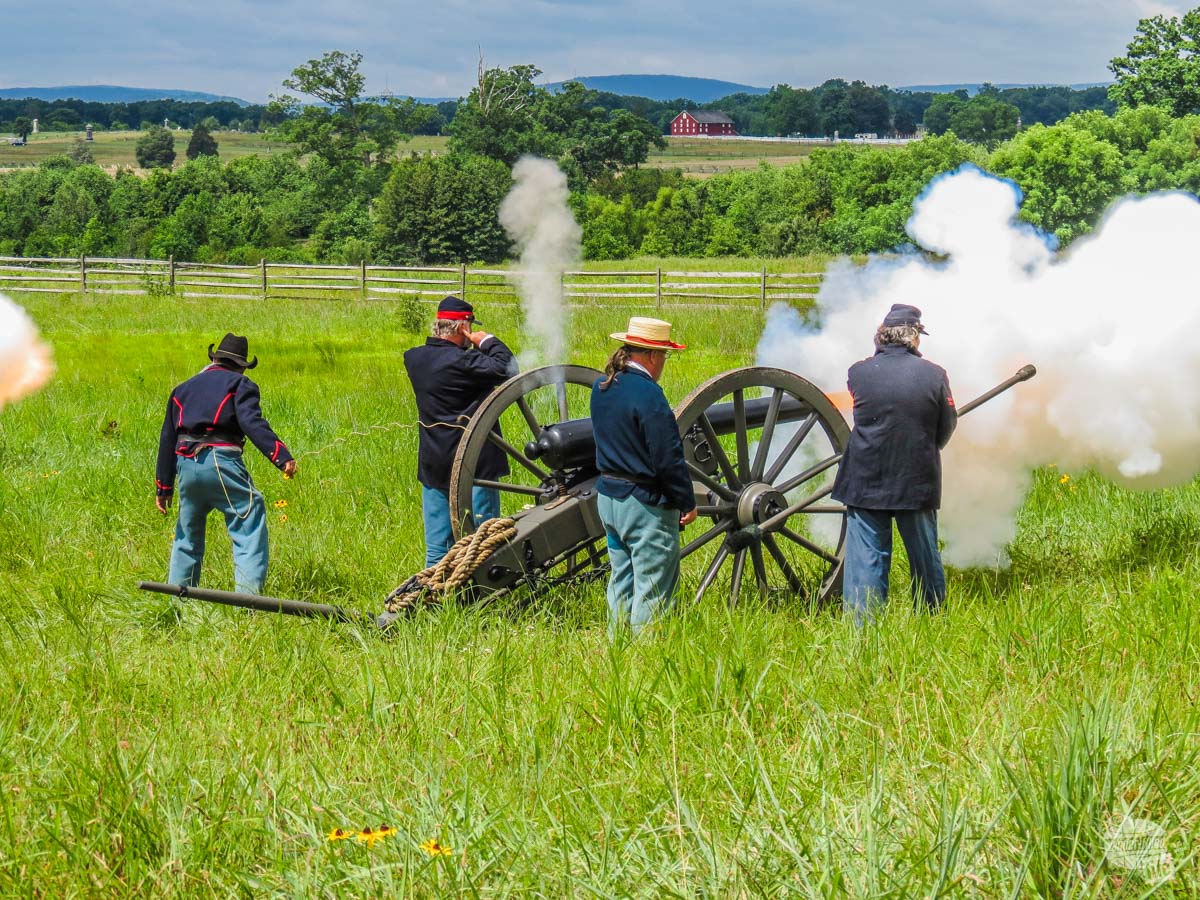
I am doing my best to take you in an order that makes sense from a historical perspective but I also don’t want to drag you back and forth across the country. So, forgive me if the battles are a bit out of order, historically, on your Civil War road trip.
I have also omitted a few coastal sites which saw action during the war because they are way out of the way for not much significance to the overall war. I also did not include the sites of the New Mexico campaign, again, due to the distances covered, but included them on this map if you are interested.
(Disclaimer: When we link to places where you can buy our stuff or places we stayed, we are using special codes that earn us commissions on the sales at no additional cost to you. Please see our Review Policy for more information.)
What to Expect When Visiting a Civil War Battlefield
Civil War battlefields have a couple of common features: wide open spaces and memorials. With few exceptions, the majority of these sites are not that scenic. They are mostly open fields where a battle happened.
Especially in the eastern theater, you will find a LOT of stone monuments to the various units that fought in the battles, most erected around the 50th anniversary of the battle by the relatives of those who fought in the battle and the local communities that sent the troops to fight.
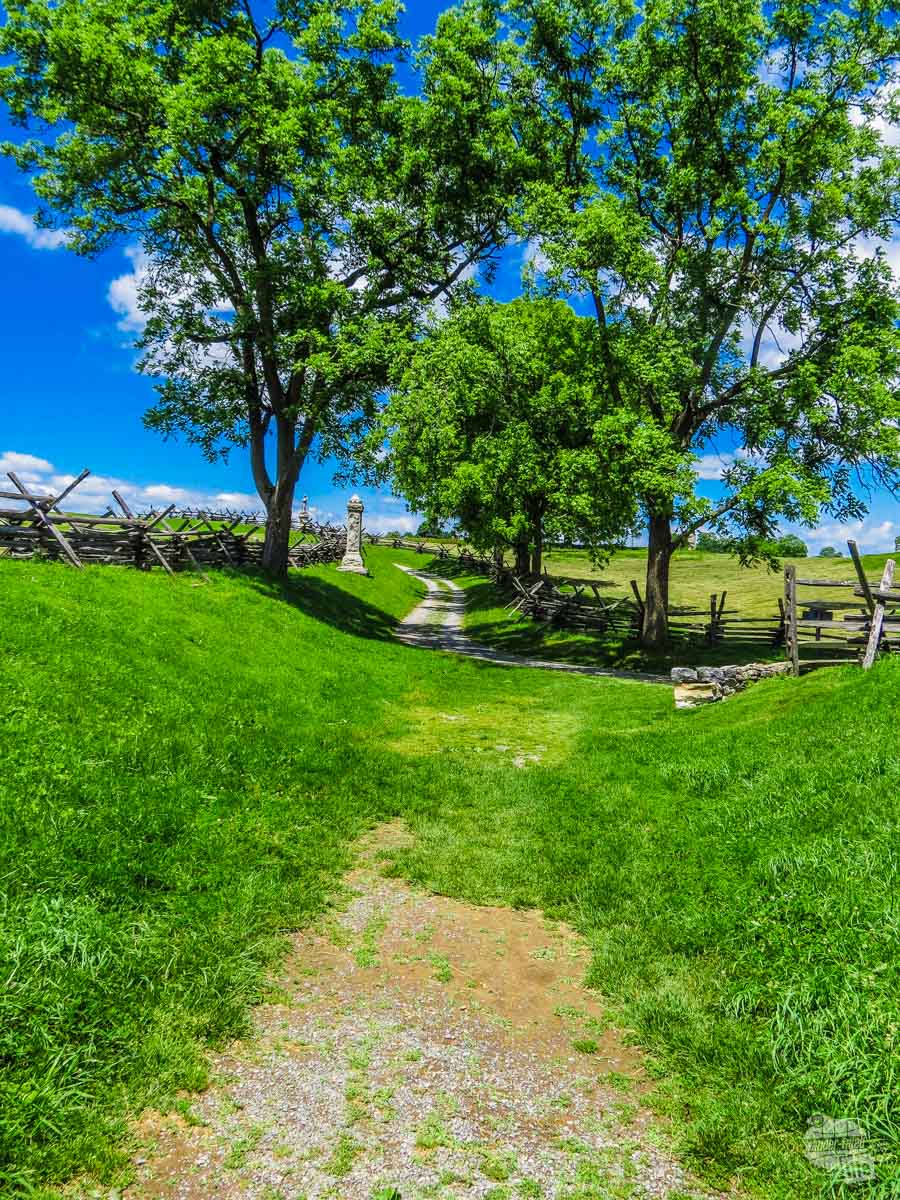
Most of these battlefields have driving tours which will take you to the major locations of the battlefield. These are necessary to touring most battlefields, which can be quite large.
The first thing you should do, upon arriving at the battlefield, is stop at the visitor center. The overwhelming majority of sites have a good exhibit on the battle, explaining the events leading up to the battle, the battle itself and the impact of the battle.
The visitor centers also, typically, have an excellent film going through the battle, which I have found essential for visualizing what the soldiers went through.
Why Civil War Battlefields Have More Than One Name
The Union and the Confederates had different conventions for naming battles. The Union would often name the battlefield after nearby natural features, like rivers, and the Confederates would name battles after nearby towns or man-made structures.
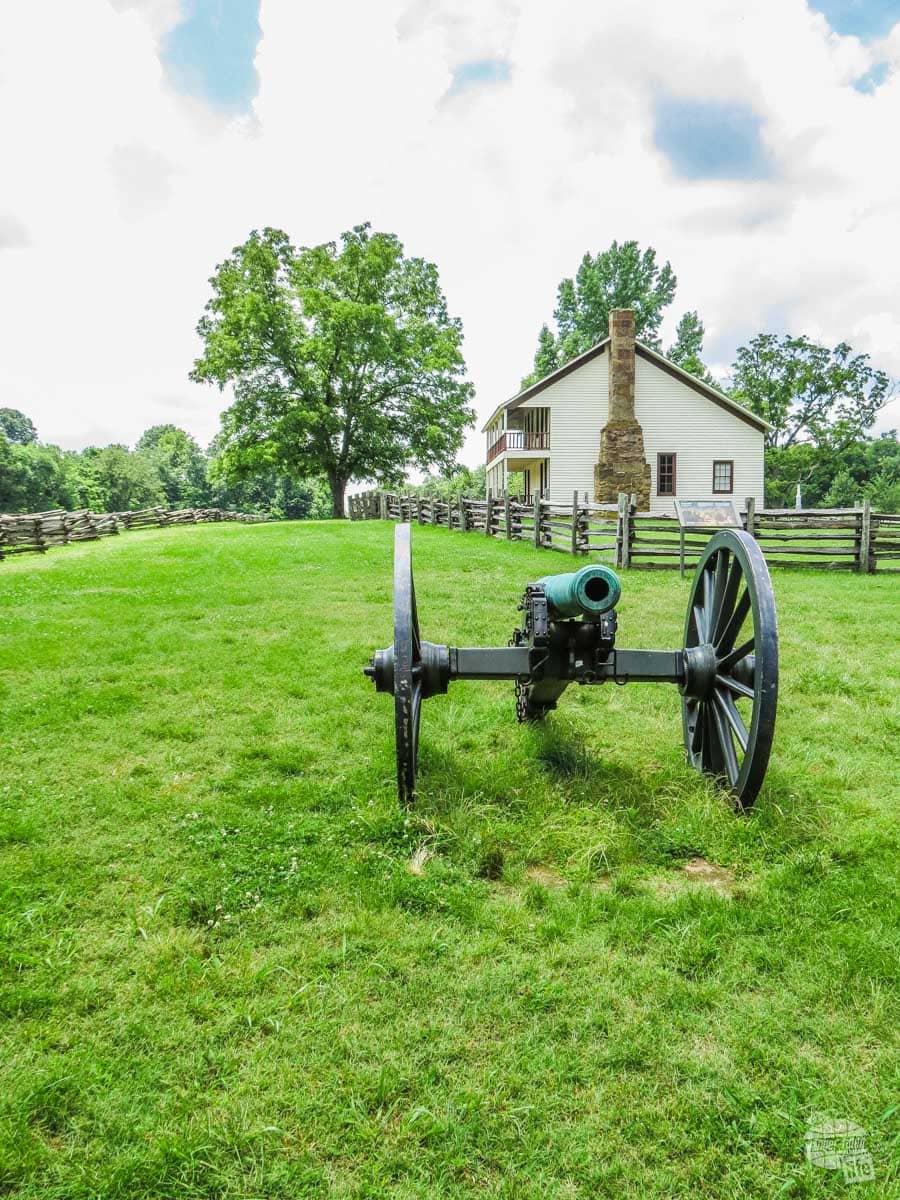
For example: the Battle of Manassas was named by the Confederates after the nearby railroad junction whereas the Union referred to it as the Battle of Bull Run, named after a nearby creek.
In terms of choosing a name, historians typically refer to the battle by the choice of the victor, so texts refer to the Battle of Pea Ridge, not Elkhorn Tavern.
Western Theater Civil War Road Trip – Western Tennessee, Arkansas, Missouri and Mississippi
Start: Nashville, TN
Nashville is a great place to start your Western Theater Civil War road trip. Aside from being a great town to visit, it is also close to two Civil War battlefields.
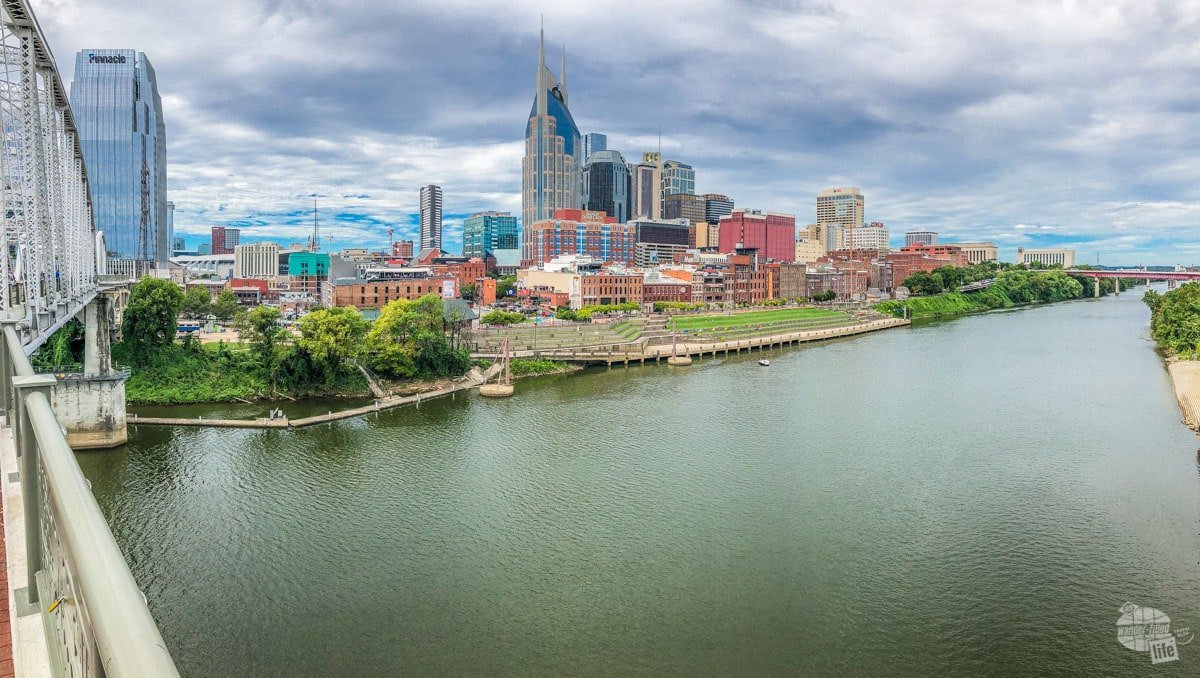
We had a blast in Nashville and there is a ton to see and do… Plus the food is to die for. Seriously, don’t leave Nashville without trying some hot chicken.
Read more about visiting Nashville here.
Stones River National Battlefield
December 31, 1862 – January 2, 1863
Stones River National Battlefield is located about 30 miles south of Nashville and is your first stop on this Civil War road trip. This is the site of a particularly tough battle where Union forces repelled a Confederate push to hold middle Tennessee.
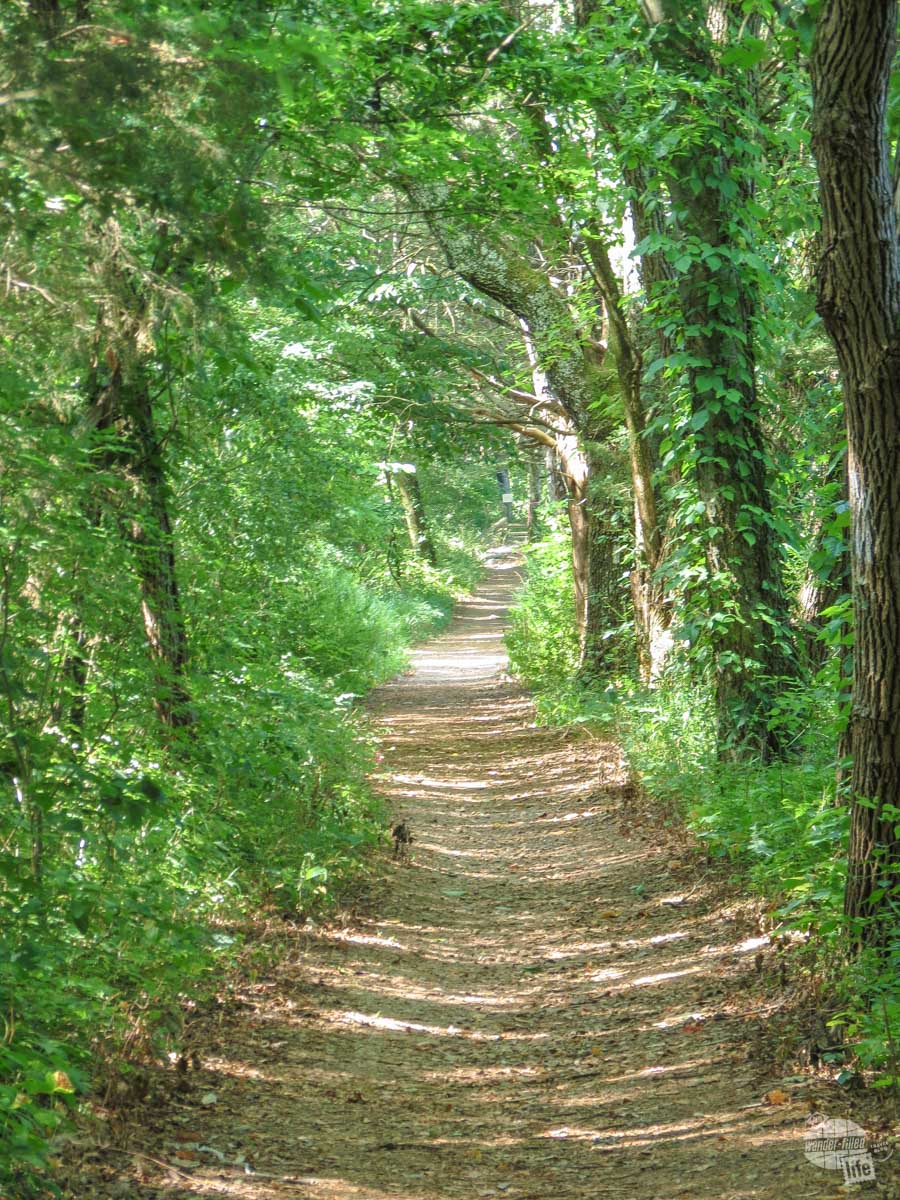
This is one battlefield you will want to get out of your car and do a bit of walking to see the field itself. The battlefield is surrounded by sprawl and a good amount of the battlefield is on private land. What remains is the core of the battlefield, including the “Slaughter Pen” where the casualties were particularly high.
We recommend hiking the 3.2-mile Boundary Trail to see some of the most significant sites of the battle.
Fort Donelson National Battlefield
February 11-16, 1862
Our second stop on the Western Theater Civil War Road Trip is Fort Donelson. Fort Donelson National Battlefield is located 83 miles northwest from Nashville along the Cumberland River. Here, the Union Army surrounded the Confederate-held fort and Ulysses S. Grant earned his nickname “Unconditional Surrender.” The Union captured the fort, leading to the eventual capture of Nashville.
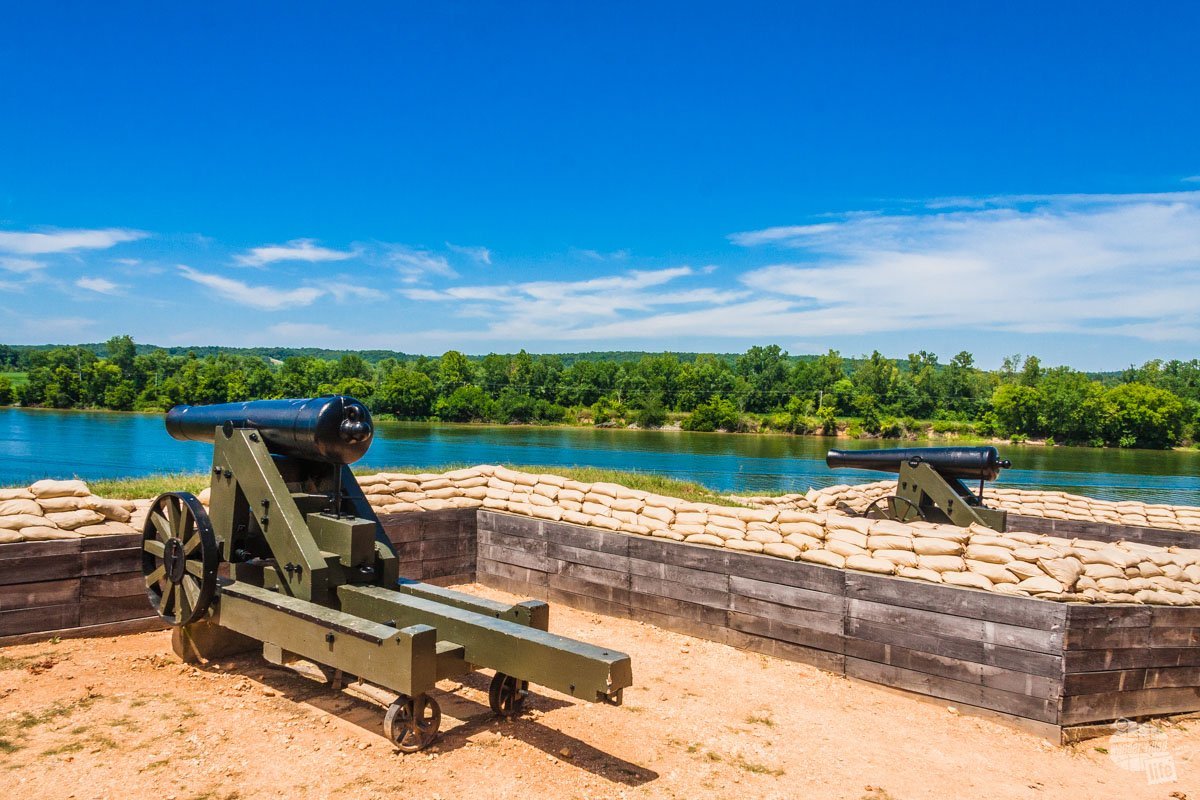
Unlike the last stop on our Civil War road trip, this fort is best toured by car. The park brochure (officially called a Unigrid) has an excellent driving tour. Some hiking trails explore a few of the more remote parts of the battlefield.
While you are at the visitor center, be sure to ask the rangers about the eagles. The park is known for its population of bald eagles right along the river.

Shiloh National Military Park
April 6-7, 1862
Following the victory at Fort Donelson, Grant sailed south on the Tennessee River, camping at Pittsburg Landing (the other name for the battle). Confederate forces under Albert Sidney Johnston launched a surprise attack, moving from nearby Corinth, MS.
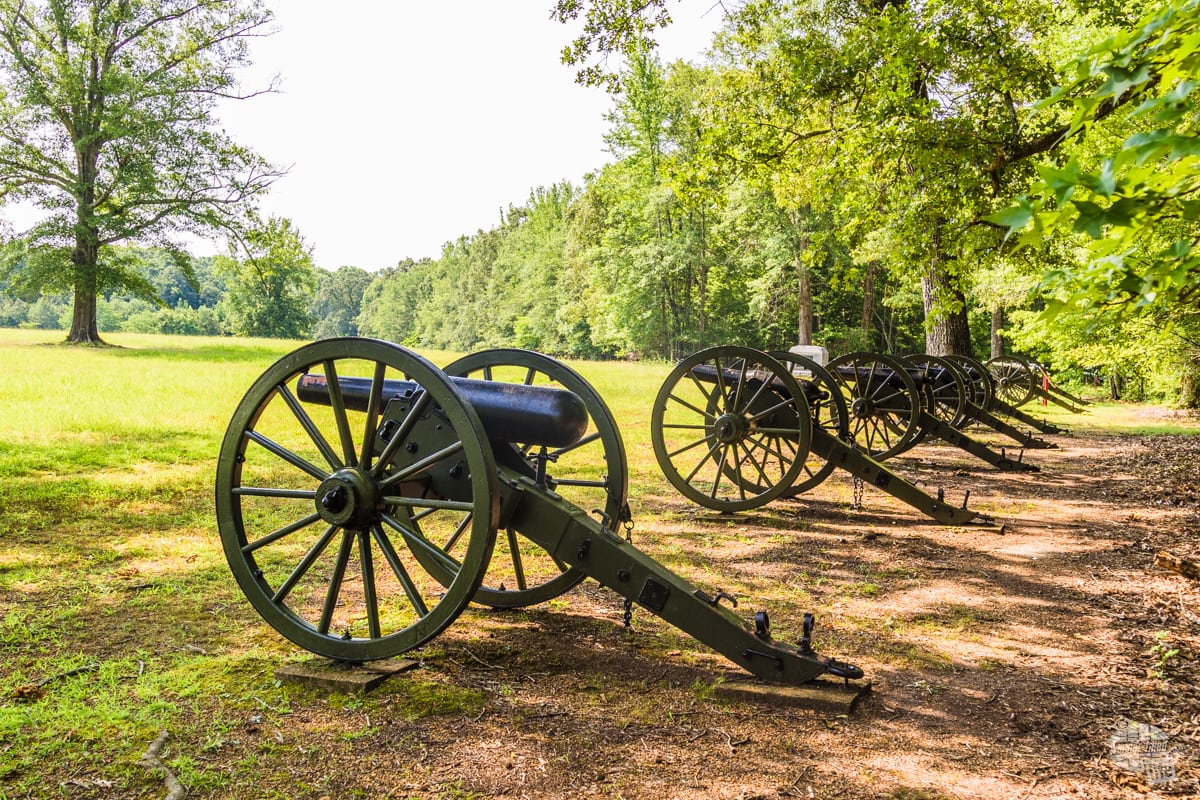
Reinforcements arrived and eventually drove off the Confederates but at significant cost to both sides. At the time, the Battle of Shiloh was the bloodiest of the war until Stones River, which was eventually eclipsed by the battles of Chancellorsville and Gettysburg, respectively.
This battlefield is best toured by car with the self-guided auto tour. There are also some fantastic exhibits and a film at the visitor center.
Honestly, there is not much around the battlefield in terms of a town to stay in. We camped about 45 minutes away in a decent campground but, were I visiting this battlefield again, I would probably just day trip from Memphis.
Read our full campground review on RV Life here.
Memphis
Memphis is one of our favorite cities. We have been twice and loved it both times. You can easily spend a couple of days in the city and not get bored.
If you do go, be sure to get some BBQ! Memphis has some of our favorite BBQ joints in all the South, including Central BBQ and Rendezvous.
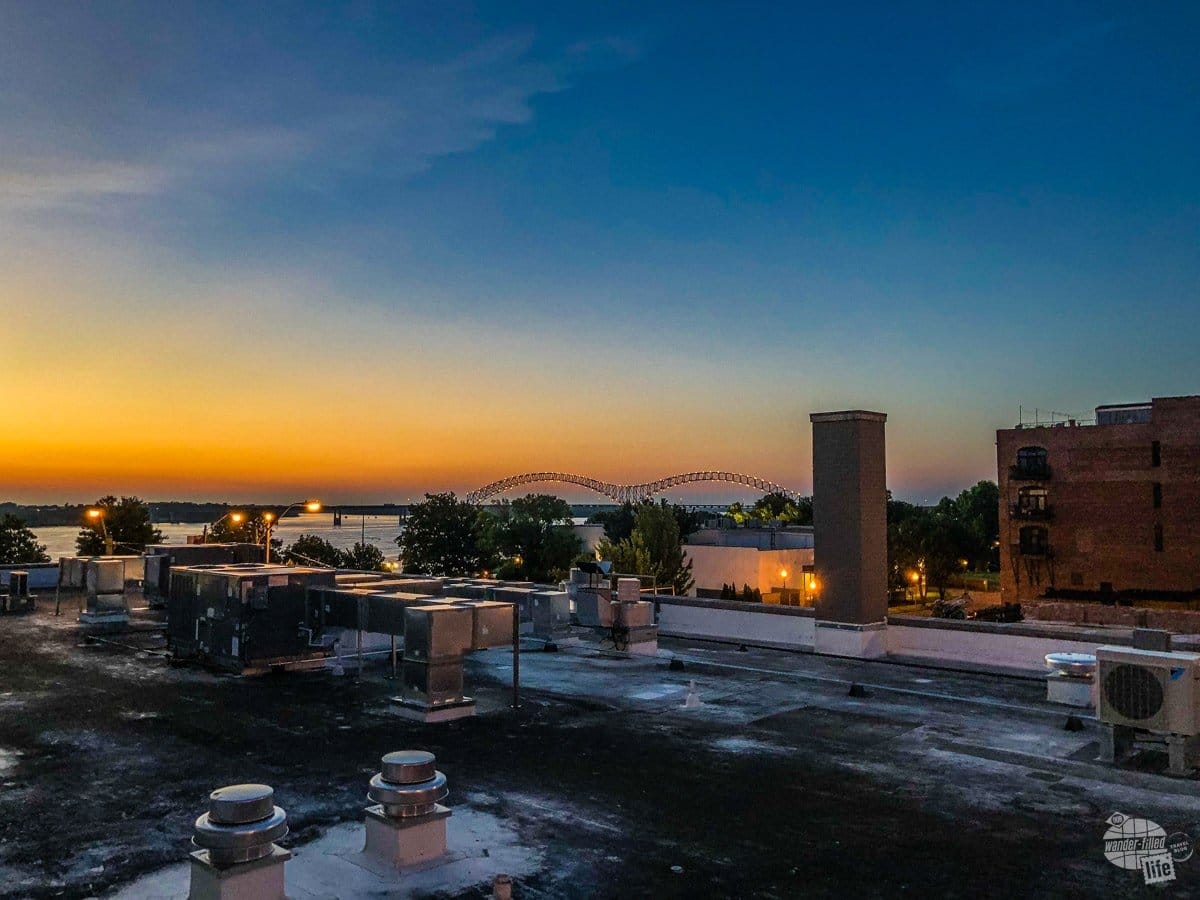
It’s also not far from two other battlefields on your Civil War road trip: Tupelo and Brices Cross Roads.
Read more about visiting Memphis.
Brices Cross Roads National Battlefield
June 10, 1864
The next stop on your Western Theater Civil War Road Trip is Brices Cross Roads National Battlefield Site. The Battle of Brices Cross Roads was an overwhelming victory by General Nathan Bedford Forrest’s cavalry versus a larger Union expedition coming south from Memphis.
The battle was a much-needed victory for the Confederates, supplying significant arms and supplies to their beleaguered ranks.
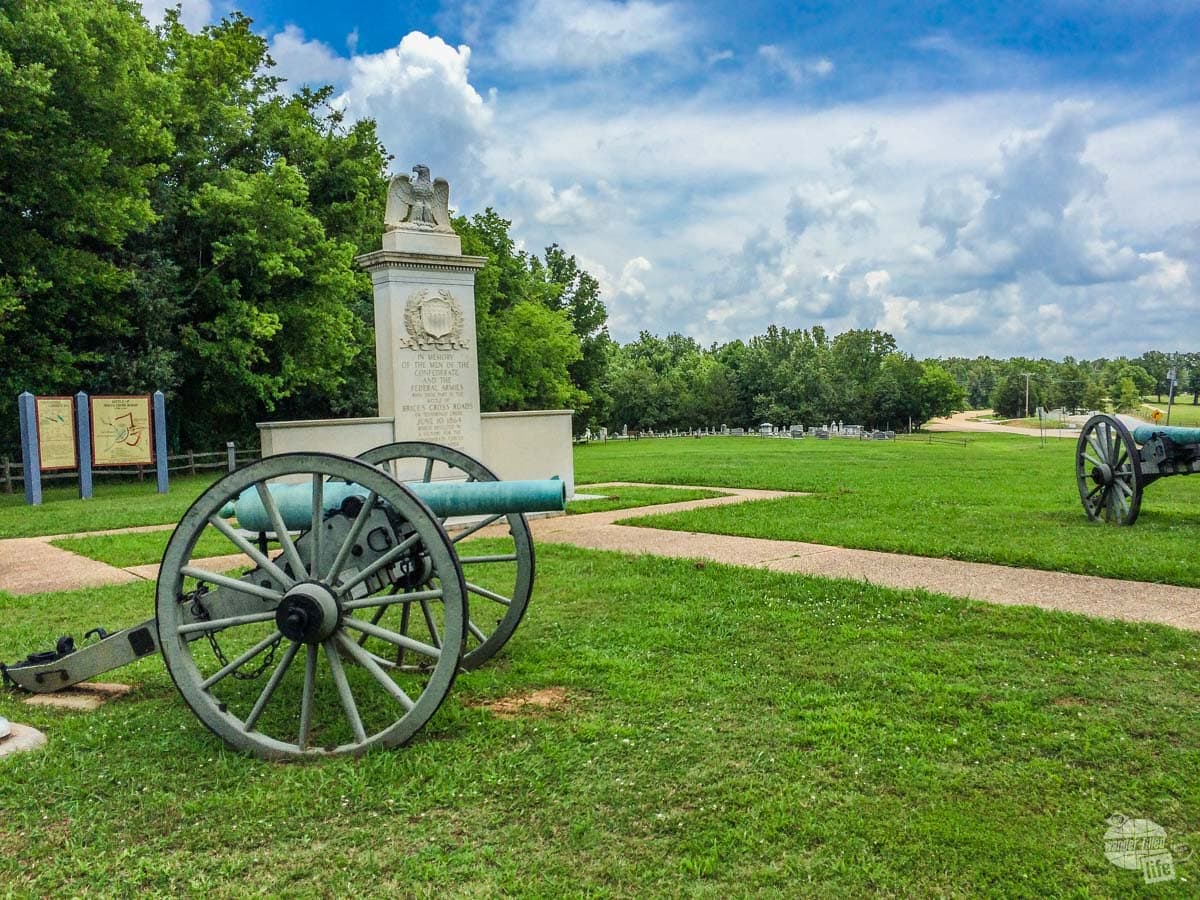
There’s not much to the battlefield. There are a couple of signs and an open field. There is no visitor center or any other services. If you are looking for more information on the site, you can find it at the Natchez Trace Parkway Visitor Center just east of Tupelo.
That said, there is a driving tour of the battle organized by Mississippi’s Final Stands. They have an interpretive center located about 4.5 miles to the east. We haven’t been but it appears to offer the interpretive information lacking from the National Park Service for both this battle and Tupelo National Battlefield.
Tupelo National Battlefield
July 14-15, 1864
The Battle of Tupelo followed the Battle of Brices Cross Roads by a bit more than a month, when Union forces counterattacked, defeating Forrest’s cavalry and securing Union supply lines.
If you thought there wasn’t much to Brices Cross Roads, be prepared to be completely underwhelmed by Tupelo National Battlefield. The battlefield is essentially a park on a busy road in Tupelo. There is a sign and a couple of monuments. That’s it.
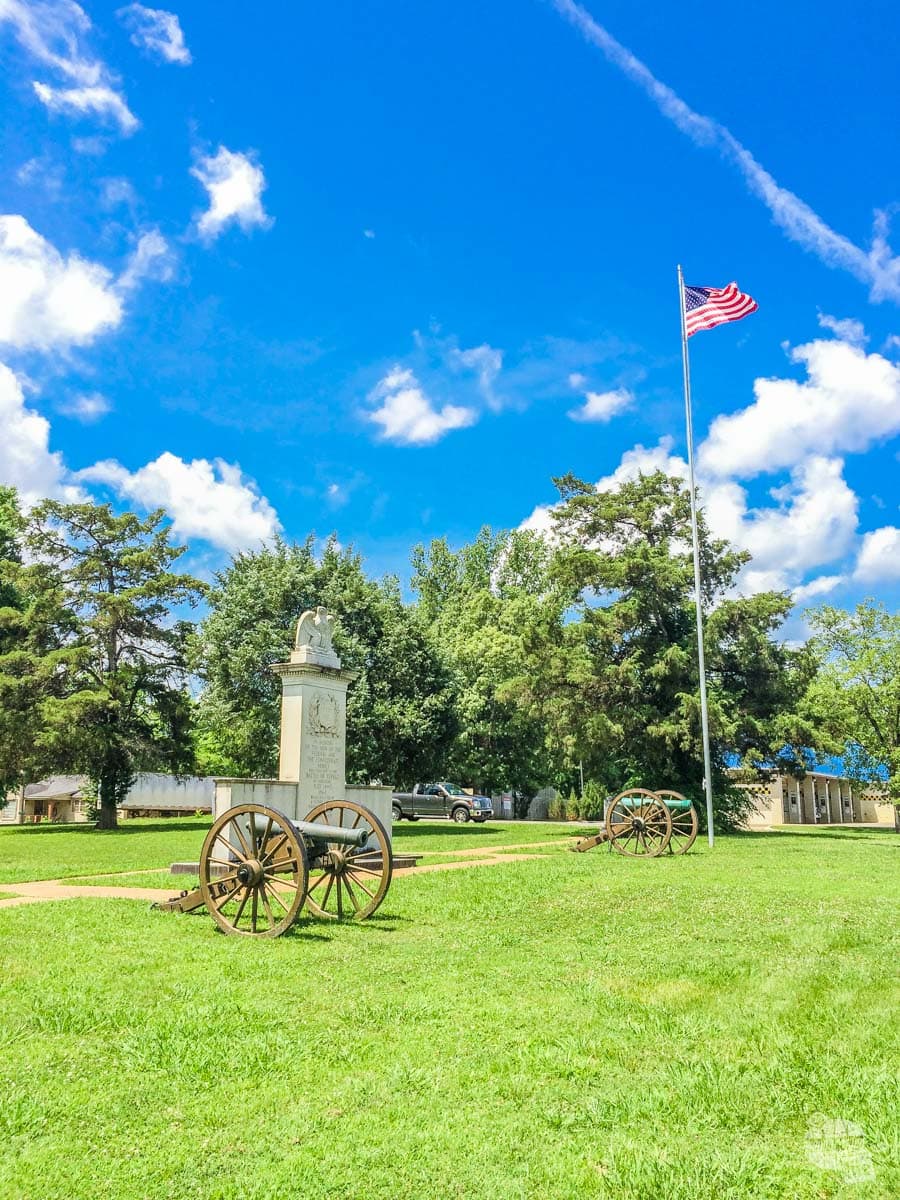
These two battlefields are easily visited on your way through the area and do not require lengthy stops. Seriously, you’ll only need about 10 minutes to visit each of these sites. That said, I highly recommend either visiting the interpretive center from Mississippi’s Final Stands, which has exhibits on both battles, or the Natchez Trace Visitor Center just east of town for more information.
Read more about driving the Natchez Trace here.
I will also say we enjoyed visiting Tupelo. The downtown area is pretty cool, as is seeing the Elvis birth home. If you need an overnight stop, this is a good one.
Arkansas Post National Memorial
January 9-11, 1863
The Confederates built a fort along the Arkansas River and the Union attacked the position as part of a larger campaign to take Vicksburg. While the Union won the battle, it did not aid in the advancement toward Vicksburg.
Arkansas Post National Memorial is mainly dedicated to preserving what was once a frontier trading post on the Arkansas River. The portion of the area where the Civil War fort was located has since been eroded by the river.
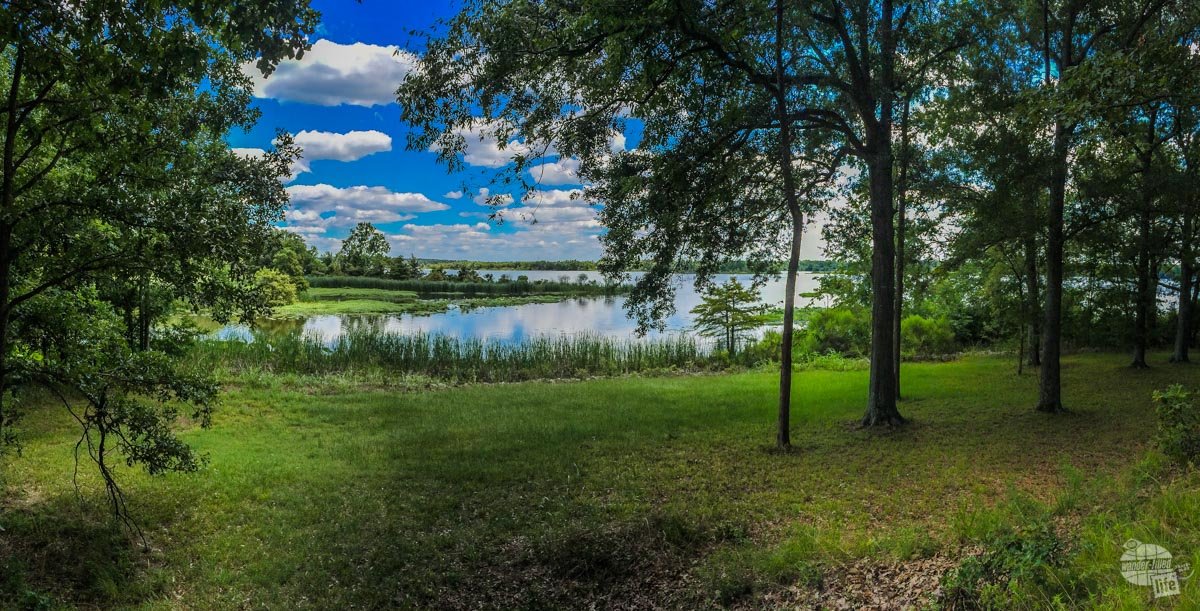
Still, the site is worth an hour or so on your way west on your Civil War road trip.
Wilson’s Creek National Battlefield
August 10, 1861
Wilson’s Creek National Battlefield, located in southern Missouri, is the next stop on your Western Theater Civil War Road Trip.
This was the first major battle west of the Mississippi River and was significant in the push to control Missouri. While the battle was a Confederate victory, they were unable to organize their forces to pursue retreating Union forces.
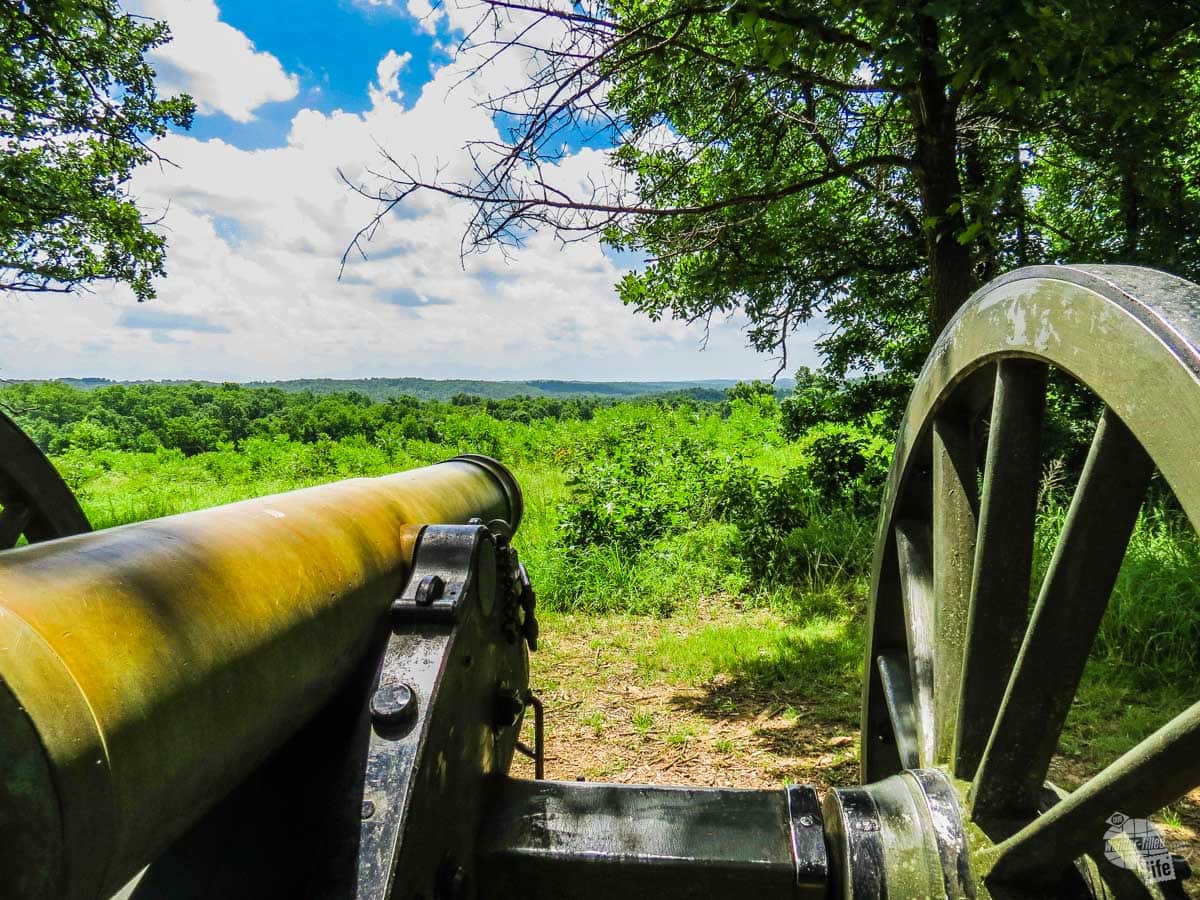
There’s a 4.9-mile loop road around the battlefield with several stops plus an excellent film on the battle at the visitor center. You can also get out on the 7-mile trail system on either foot or horseback.
Read more about visiting Wilson’s Creek National Battlefield here.
Pea Ridge National Military Park
March 7-8, 1862
After visiting Wilson’s Creek National Battlefield, our Civil War Road Trip turns back southeast, heading to Pea Ridge National Military Park in northern Arkansas.
Union forces pushed Confederate forces south out of Missouri into northeast Arkansas. The Confederates counterattacked with a numerically superior force. The armies collided at a roadside inn called the Elkhorn Tavern, a local trading post and mail route.
The driving tour here circles the battlefield, much like Wilson’s Creek. We stopped at the Elkhorn Tavern to do a brief hike.
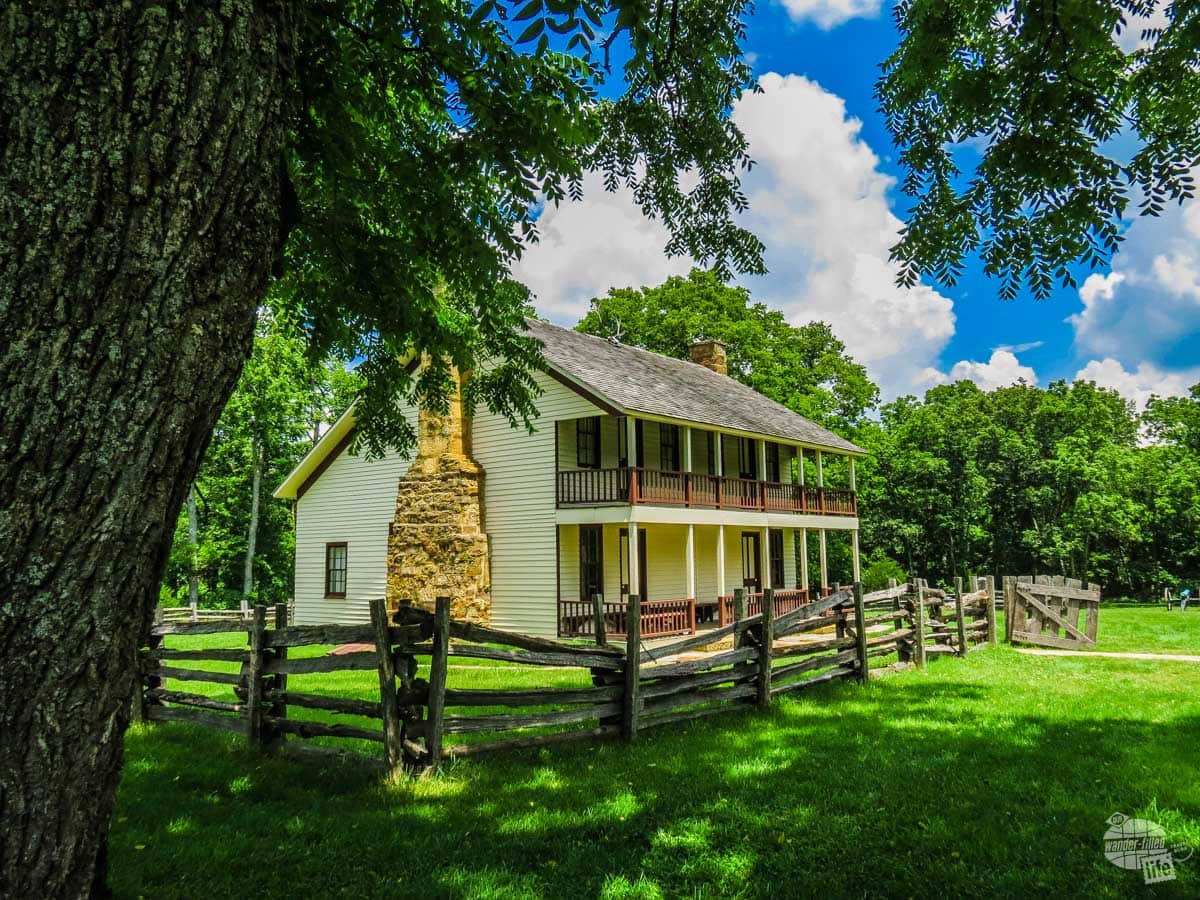
Pro tip: If you plan on hiking here, make sure you wear long pants and douse heavily with Deep Woods Off. The ticks here were brutal.
Read more about visiting Pea Ridge National Military Park here.
Vicksburg National Military Park
May 18 – July 4, 1863
Our final stop on the Western Theater Civil War Road Trip is Vicksburg National Military Park.
The capture of Vicksburg by the Union is one of the major battles of the war and allowed the Union army to gain complete control of the Mississippi River. This battle is regarded as one of the turning points of the war and it effectively split the Confederacy in two.
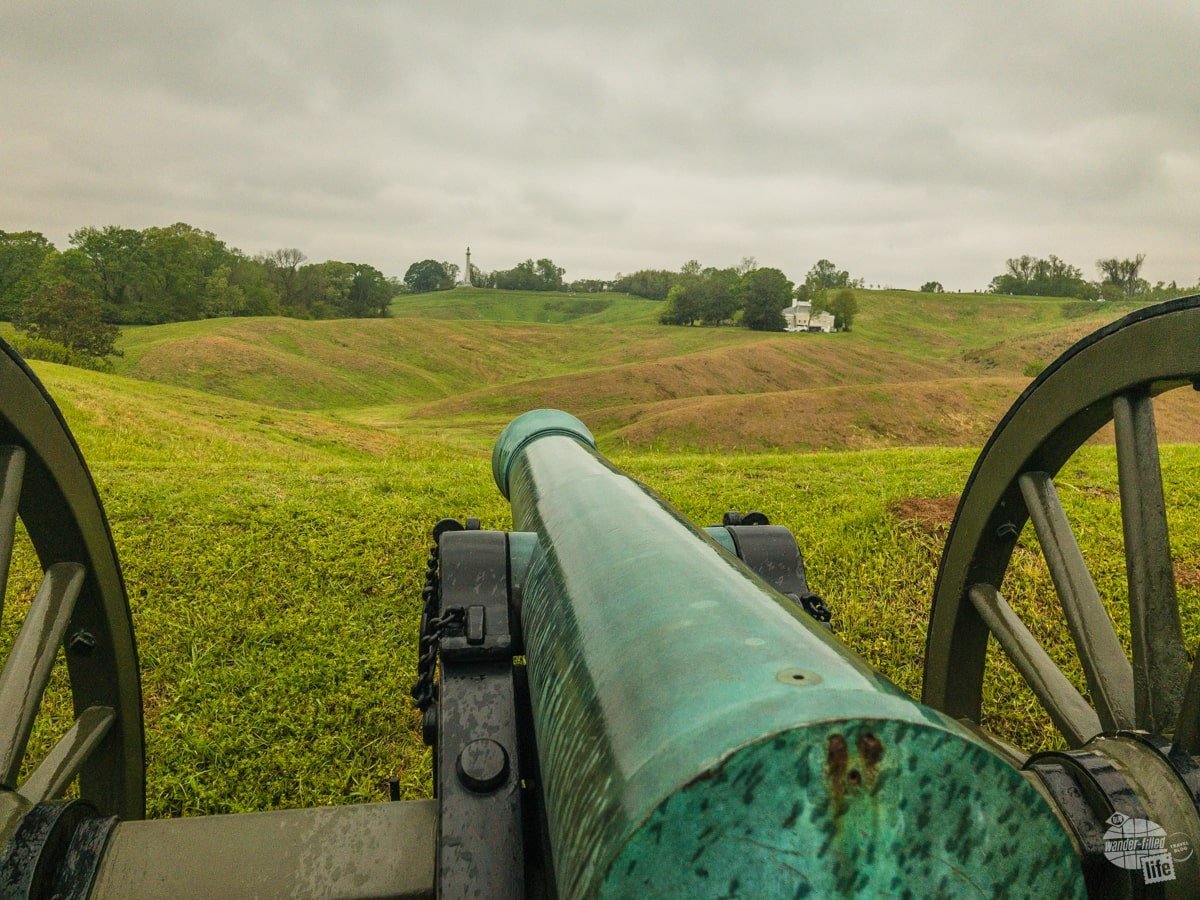
The battlefield has an excellent visitor center and auto tour. Be sure to stop down at the Mississippi River to see the restored USS Cairo, which was the first ship in US history to be sunk by a torpedo/mine.
Southern Theater Civil War Road Trip – Eastern Tennessee, Georgia and South Carolina
Start: Chattanooga, TN
Chattanooga is a favorite spot of ours. We often come up here for the weekend in the camper and we love the downtown area. The Tennessee Aquarium is simply amazing, as are Ruby Falls and Rock City, which are beloved local attractions.
It’s also home to the first battlefield of the Southern Theater Civil War Road Trip: Chickamauga and Chattanooga National Military Park.
Chickamauga and Chattanooga National Military Park
June 7-8, 1862 | August 21, 1863 | September 18-20, 1863
This park preserves ground that saw three different battles, the first and second battles of Chattanooga and the Battle of Chickamauga. It is located on the Tennessee River under the view of Lookout Mountain.
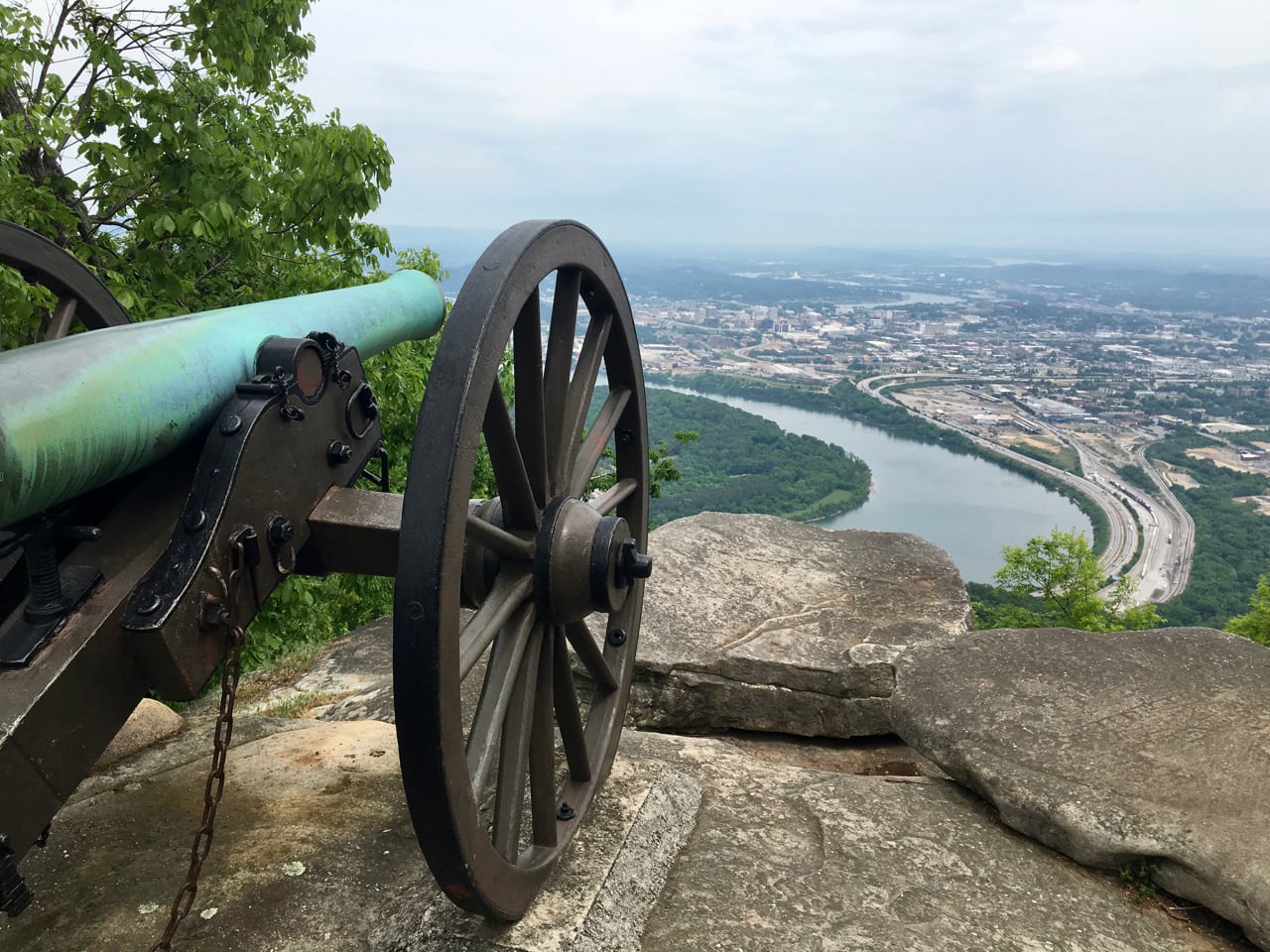
The Battle of Chickamauga was a major Union defeat following the capture of Chattanooga and had the second-highest number of casualties following Gettysburg.
The battlefield is divided into four parts, with the majority of the land dedicated to preserving the Chickamauga battlefield. That said, be sure to head up to the Lookout Mountain unit for some spectacular views.
Kennesaw Mountain National Battlefield Park
June 27, 1864
Part of General William T. Sherman’s march on Atlanta, this battle was tactically a win for the Confederates but it did not achieve the desired result of stopping the advance. Kennesaw Mountain National Battlefield Park preserves much of this battlefield.
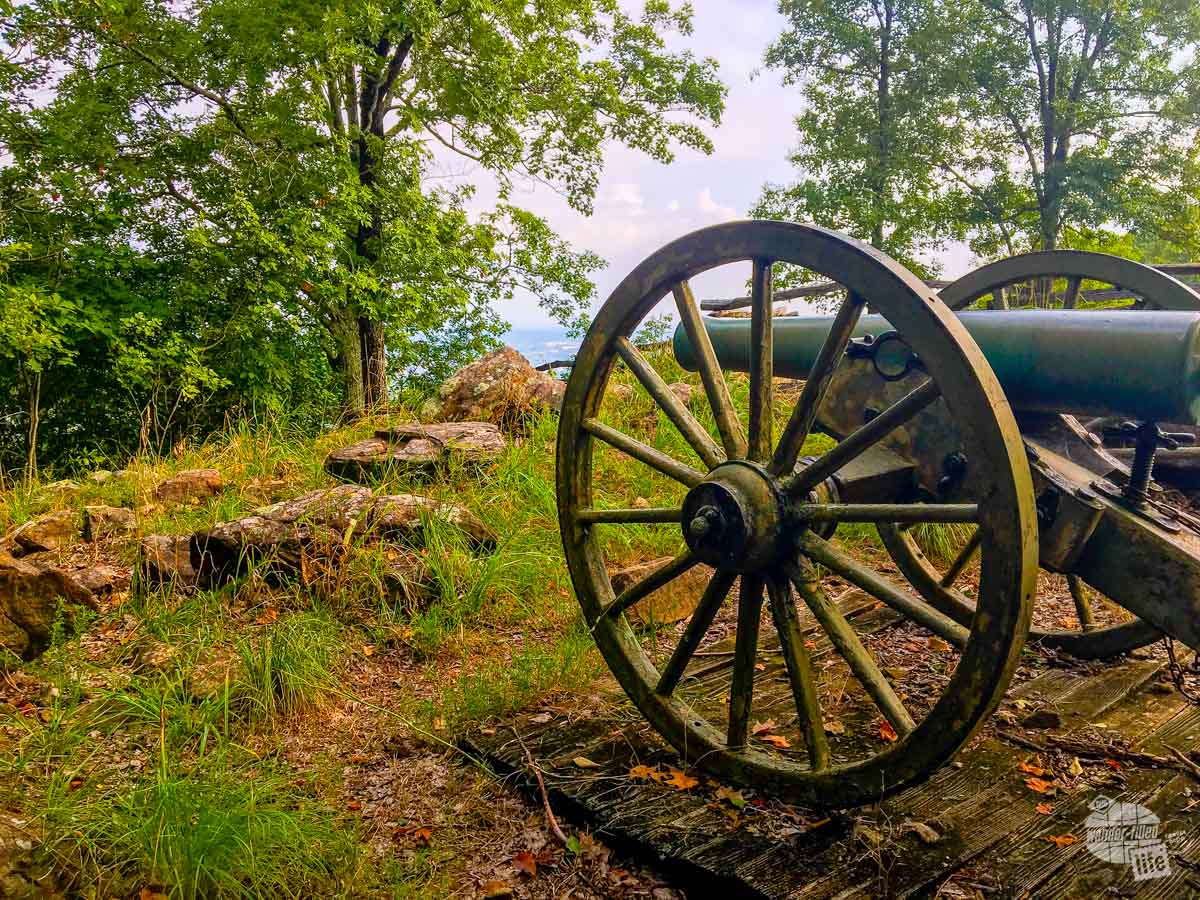
This is our “home” park and we have been many times. This battlefield is best toured on foot, so bring your hiking shoes.
There is an auto tour but there is no easy loop road like many other battlefields. Additionally, finding a place to park anywhere in the area can be quite difficult. Indeed, this park is more used for suburban recreation rather than visiting the battlefield.
Andersonville National Historic Site
February 1864 – April 1865
No Civil War road trip is complete without visiting the Andersonville National Historic Site, which preserves Andersonville Prison Camp where Union soldiers were held in brutal conditions.
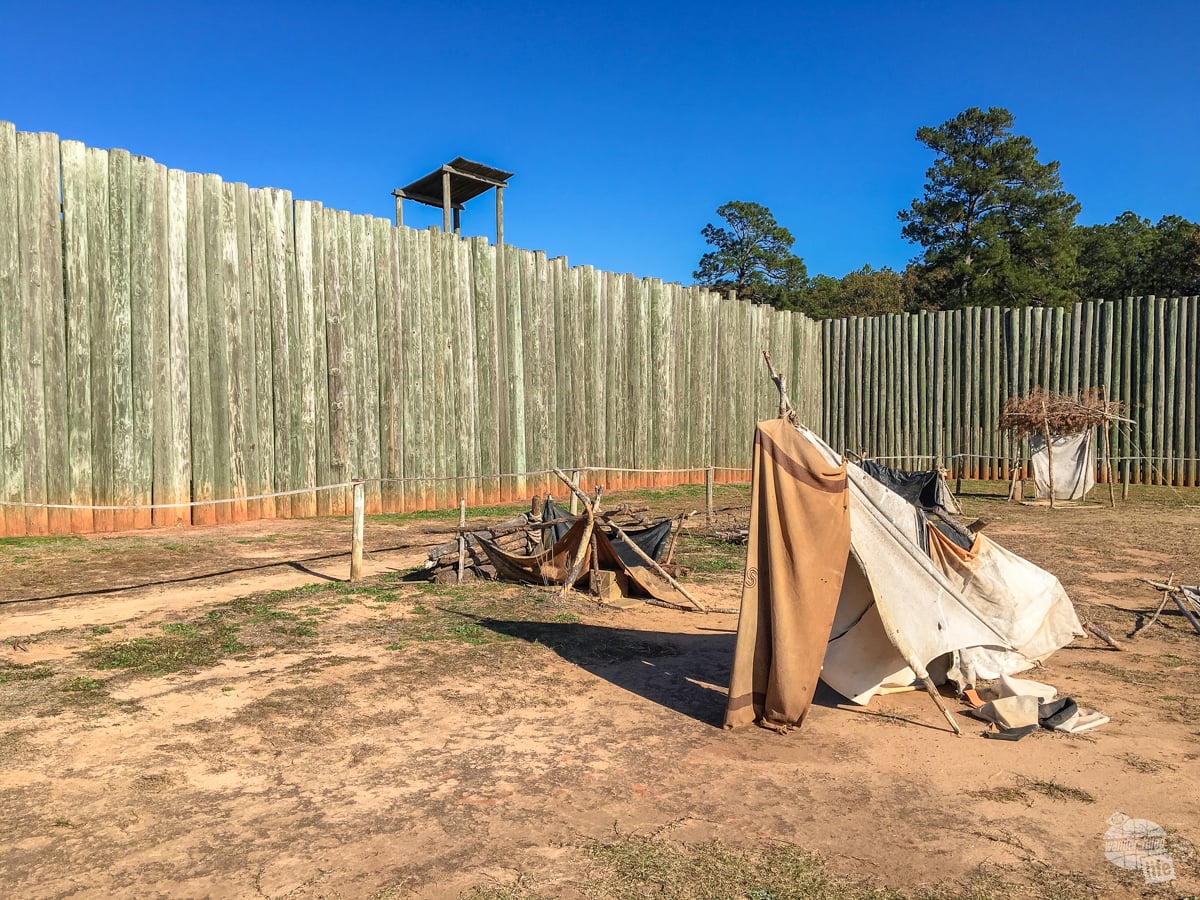
The site itself has a reconstruction of the stockade wall as well as the National Prisoner of War Museum, which details the experience of POWs through the years.
Read more about visiting Andersonville National Historic Site here.
Andersonville National Historic Site is not far from Plains, GA, where you will find the Jimmy Carter National Historic Site, which is definitely worth a detour.
Ocmulgee Mounds National Historical Park
July 30, 1864 | November 20-21, 1864
The Ocmulgee Mounds National Historical Park is not only home to pre-Columbian earthworks and a fantastic view of Macon but was also home to two minor Civil War battles: the Battle of Dunlap Hill and the Battle of Walnut Creek.
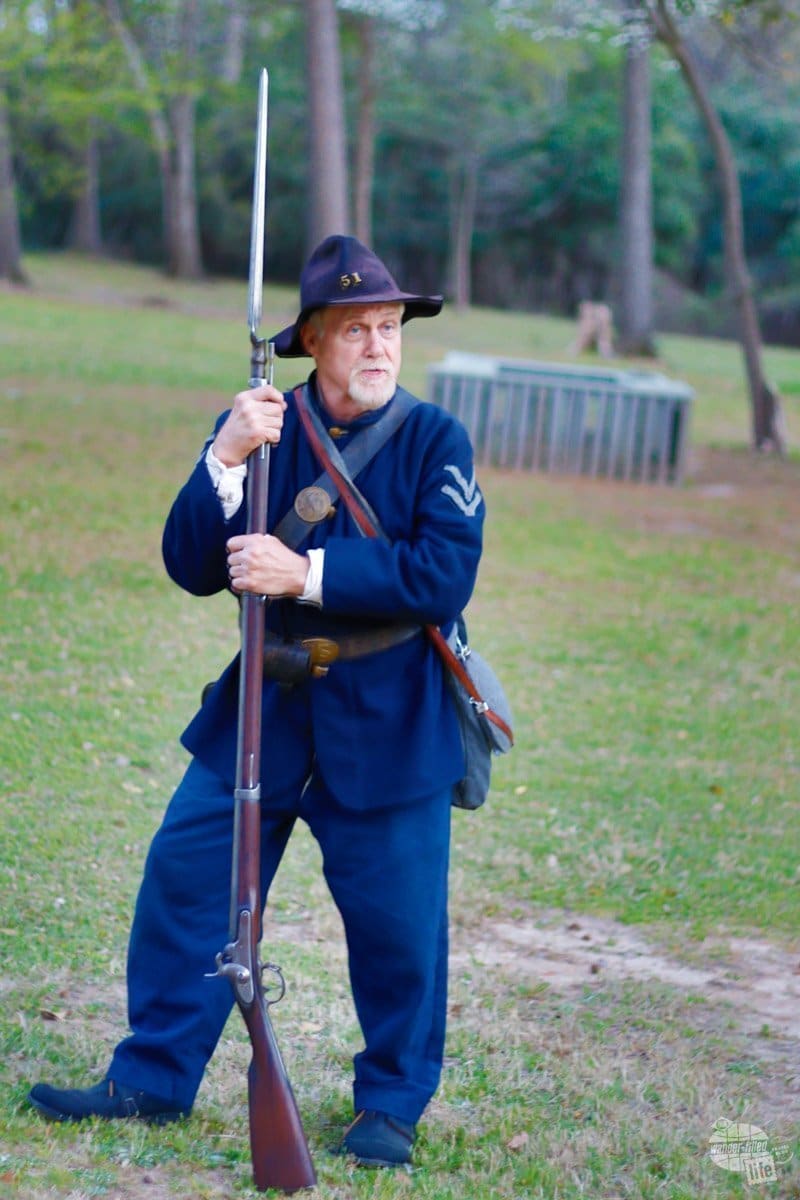
There’s not much left of the battlefield and the park is more dedicated to preserving the earthen mounds than the remnants of these two minor battles. Still, it’s worth a stop following Sherman’s March to the Sea. Macon is also a good overnight stop. The downtown area has several good restaurants.
Read more about visiting Ocmulgee Mounds National Historical Park here.
Fort Pulaski National Monument
April 10-11, 1862
Your next stop on the Southern Theater Civil War Road Trip is Fort Pulaski National Monument near Savannah.
After abandoning Tybee Island, Confederate forces fell back to Fort Pulaski. That allowed Union forces a foothold across the river from the fort. Union forces assembled 36 long-range, rifled artillery pieces and proceeded to bombard the fort for 30 hours. After these cannons breached one of the walls and came close to destroying the powder magazine, the Confederates surrendered the fort. This battle proved masonry forts could not hold against modern artillery.
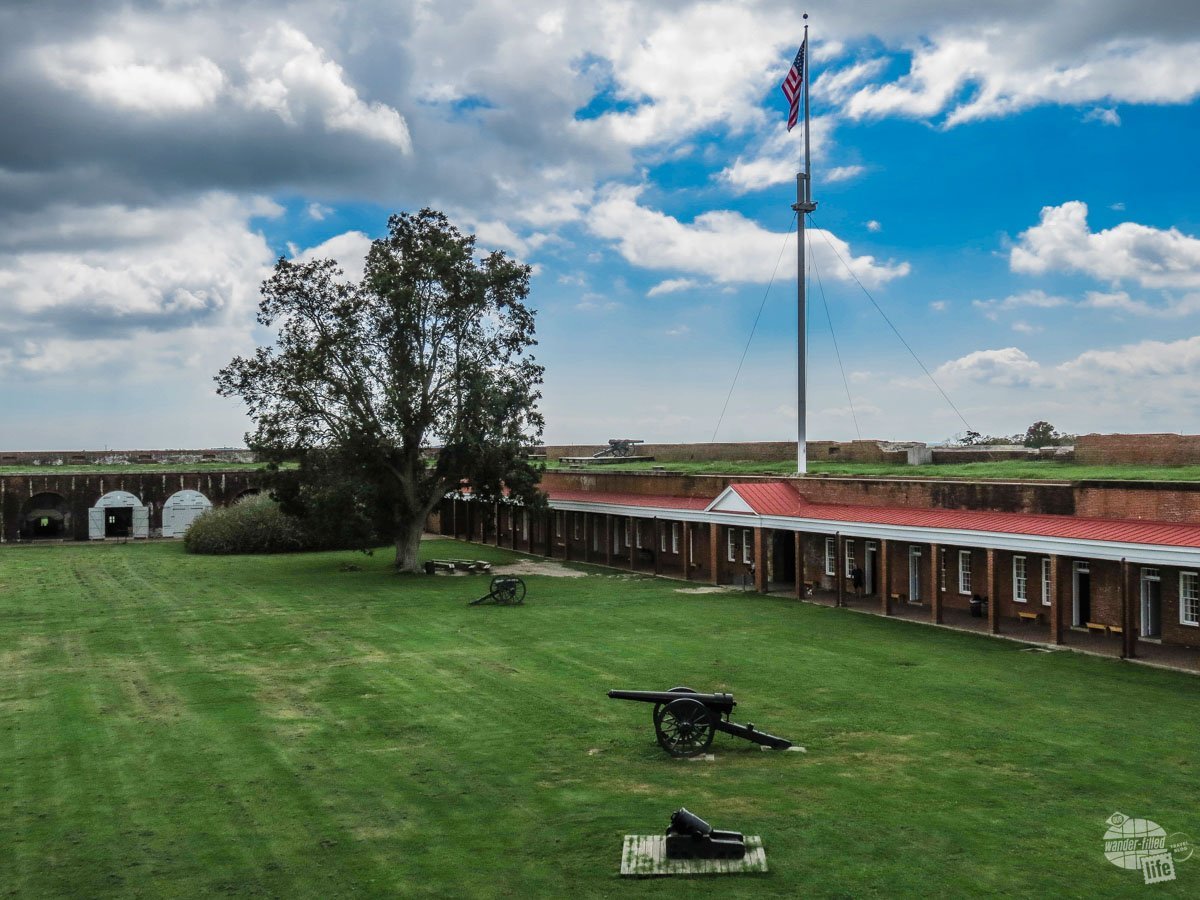
The fort has a great visitor center and you can walk the grounds and walls of the fort. Take sturdy shoes with you. Be sure to spend some time in nearby Savannah. The town has a lot of history to enjoy.
Read more about Fort Pulaski and Savannah here.
Fort Sumter and Fort Moultrie National Historical Park
April 12-13, 1861 | September 7-8, 1863
The final stop on the Southern Theater Civil War Road Trip is Fort Sumter and Fort Moultrie National Historical Park. This is the battle that started it all. The Confederate bombardment and the eventual Union surrender of Fort Sumter made the votes for secession very real.
There is a great first-hand account of the bombardment of Fort Sumter and what it was like to be in Charleston at the beginning of the Civil War in Mary Chestnut’s diary.
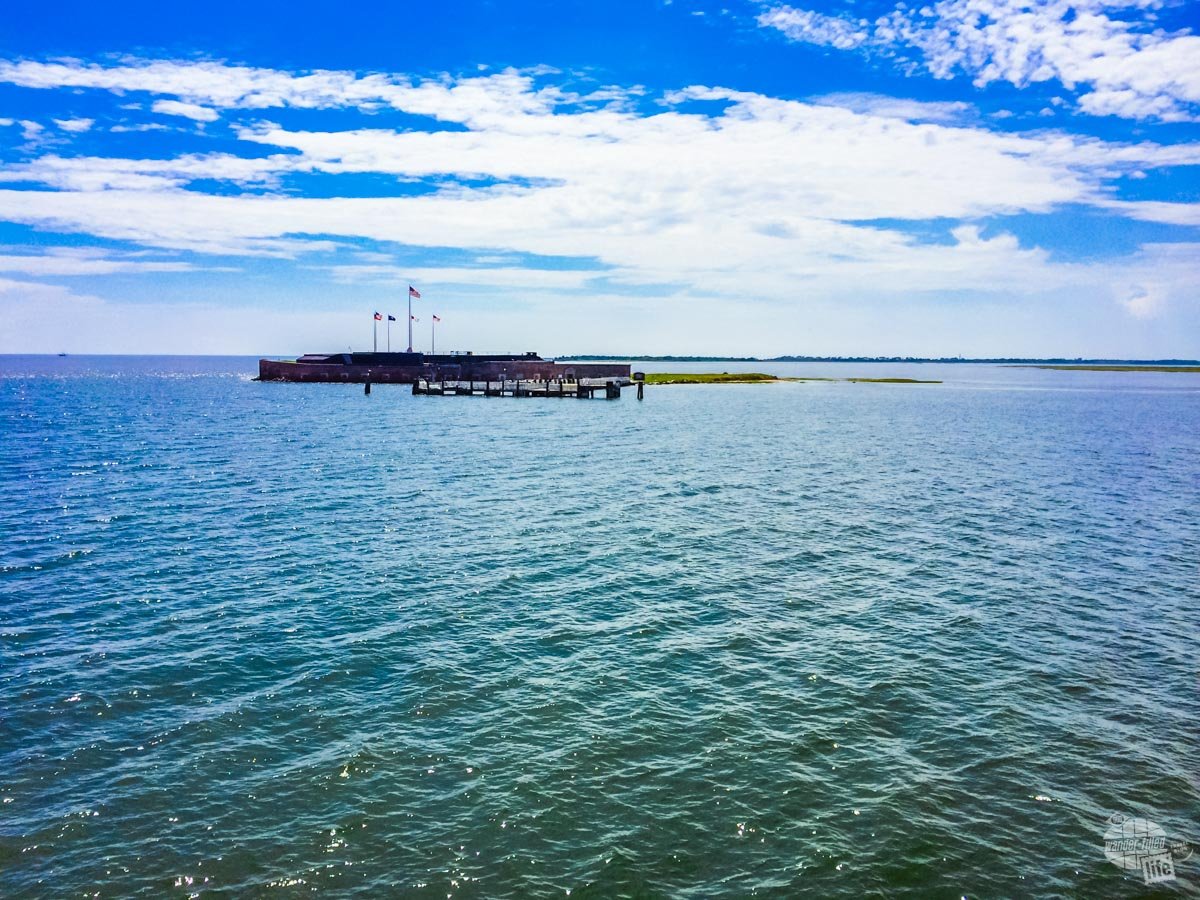
Getting to the fort requires taking a tour boat across to the island. Compared to Fort Pulaski, the fort is in shambles with only the bottom level of the wall remaining. That said, there are the remnants of WWII coastal artillery and harbor control emplacements.
Fort Moultrie is located across the channel on Sullivans Island and is far more intact. This fort provides a look at the evolution of coastal fortifications to World War II and is well worth the visit.
Charleston itself is cool and worth the overnight stop as well. There are plenty of excellent restaurants in the town, not to mention a lot of history to see.
Eastern Theater Civil War Road Trip – Virginia, West Virginia, Maryland and Pennslyvania
Start: Washington, DC
Start your Civil War road trip in Washington, DC by visiting Arlington House, the home of Robert E. Lee. Located in the heart of Arlington National Cemetery, it was actually the home of his wife, Mary Custis Lee, who was a descendant of George Washington. Here you will find Lee’s letter of resignation.
You will also find 19 defensive fortifications scattered around the city that can be visited as part of the Civil War Defenses of Washington park site. There’s also Ford’s Theatre, where Abraham Lincoln was assassinated following the war.
Manassas National Battlefield Park
July 21, 1861 | August 28-30, 1862
While the Southern Theater Civil War Road Trip ended with Fort Sumter, it seemed only appropriate to start this trip with Manassas National Battlefield Park, where the first major battle of the war occurred.
This battle was an early victory for the Confederates but really served as a demonstration of how brutal this war would be.
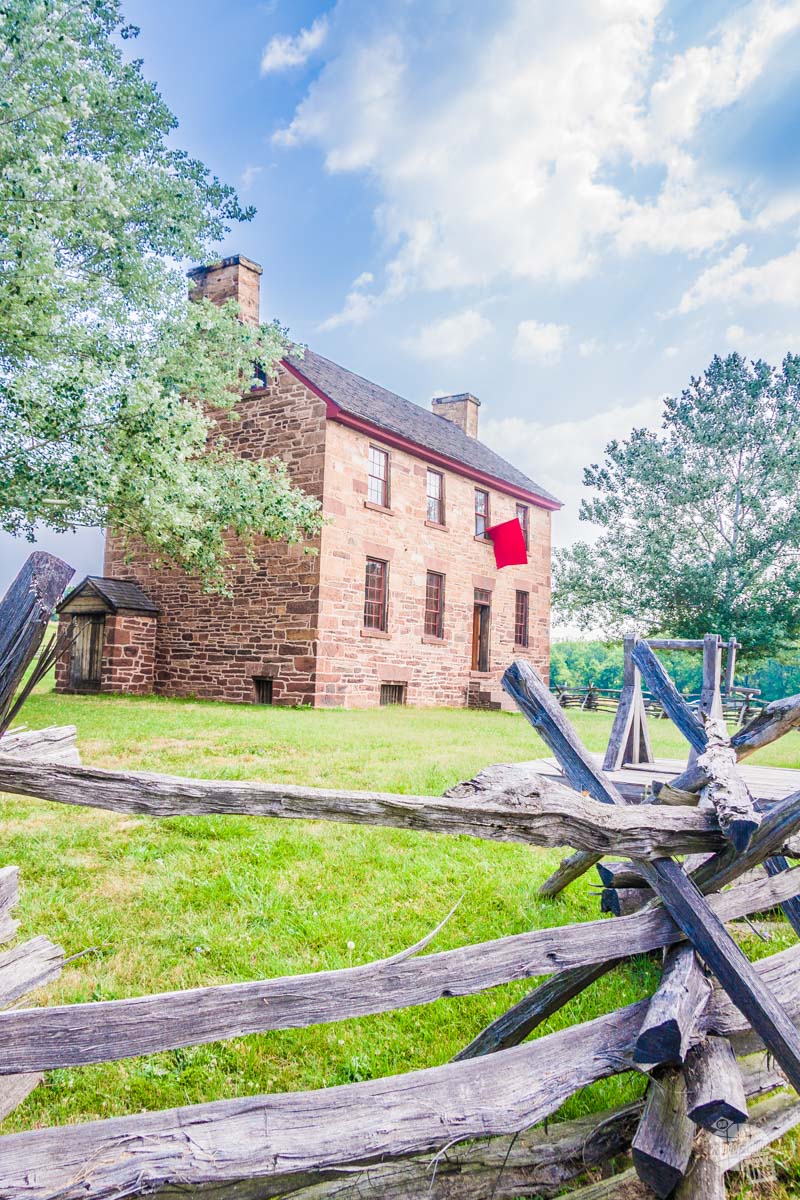
The second battle fought here was another Confederate victory leading directly to the Battle of Antietam.
The battlefield has an in-depth auto tour and a great visitor center that will walk you through the nuances of the battle.
With More Time: Cedar Creek and Belle Grove National Historical Park
October 19, 1864
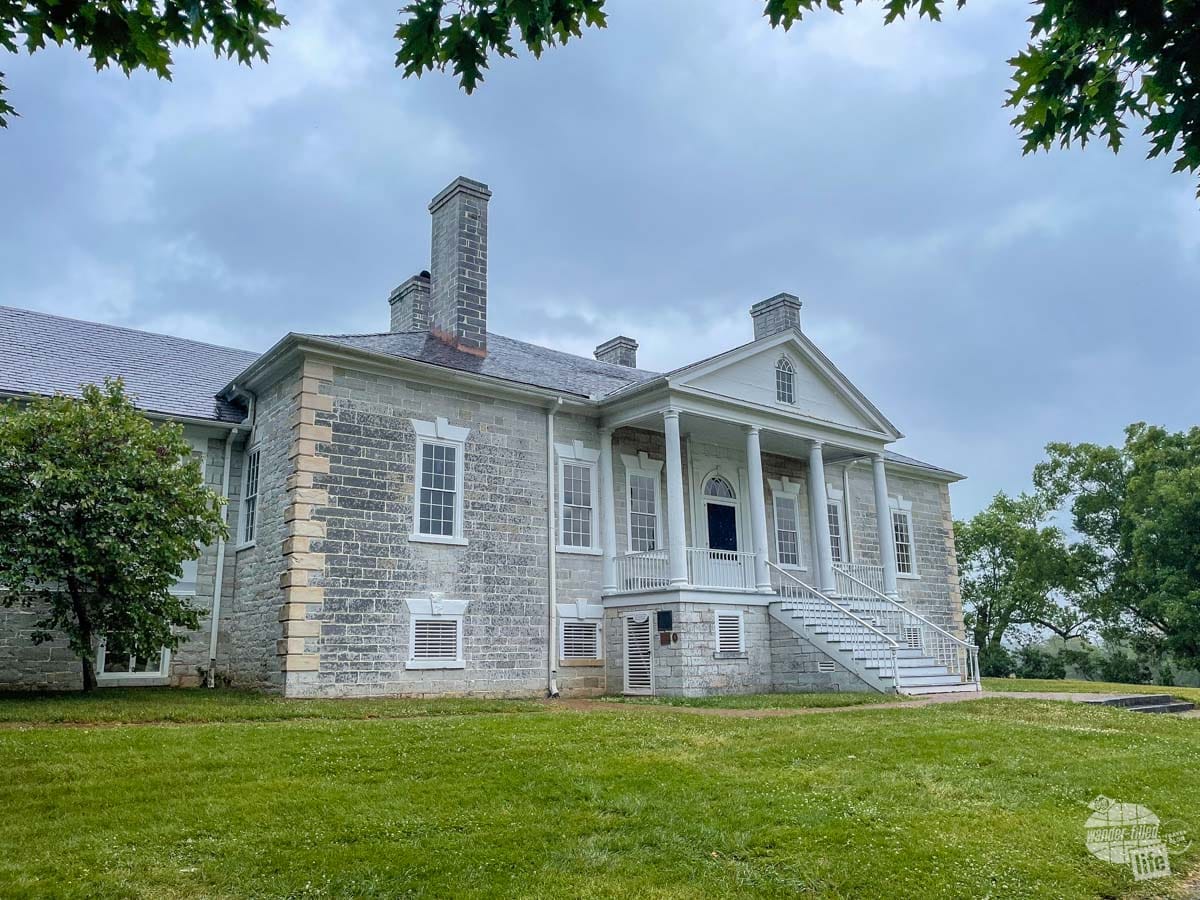
If you have extra time on your Eastern Theater Civil War Road Trip, you can drive 52 miles west from Manassas to Cedar Creek and Belle Grove National Historical Park. This site preserves the large Antebellum home, Belle Grove Plantation. It also preserves portions of the Battle of Cedar Creek.
This battle happened late in the war and ended the Sheridan’s Valley Campaign with a resounding victory over the Confederate troops. The victory, in turn, resulted in a landslide victory for Abraham Lincoln in the November 1864 Presidential Election.
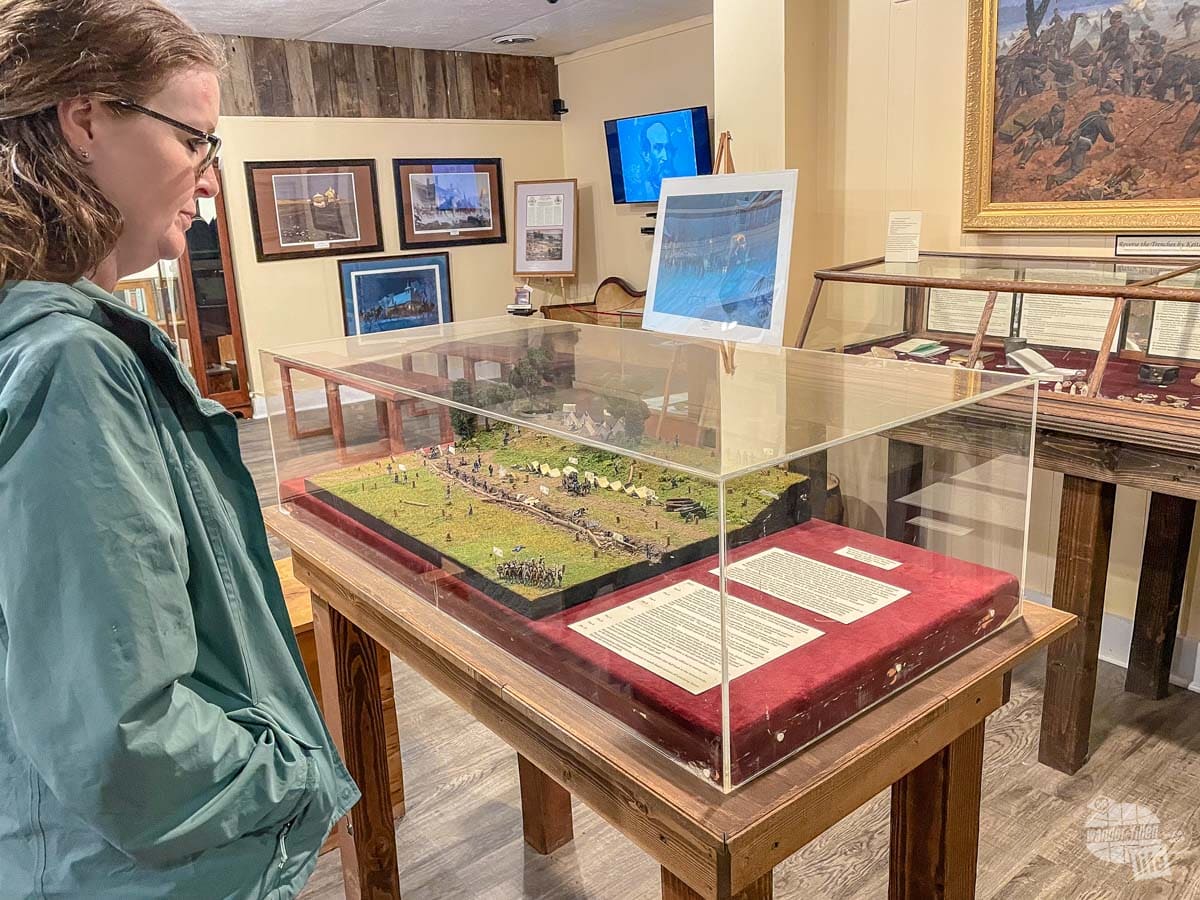
You can visit the plantation, which has excellent exhibits on the history of the home and life there. You can also visit Cedar Creek Battlefield Foundation Museum and Visitor Center, which does a good job interpreting the battle.
There are some trails and a limited auto tour of the battlefield at the site.
Harpers Ferry National Historical Park
October 16-18, 1859 | September 12-15, 1862
Your next stop on the Eastern Theater Civil War Road Trip is Harpers Ferry National Historical Park.
Harpers Ferry was once one of the major armories for the US and was the site of the John Brown Raid, a pre-Civil War slave rebellion. It was also home to several skirmishes for control of this section of the Potomac and Shenandoah rivers.
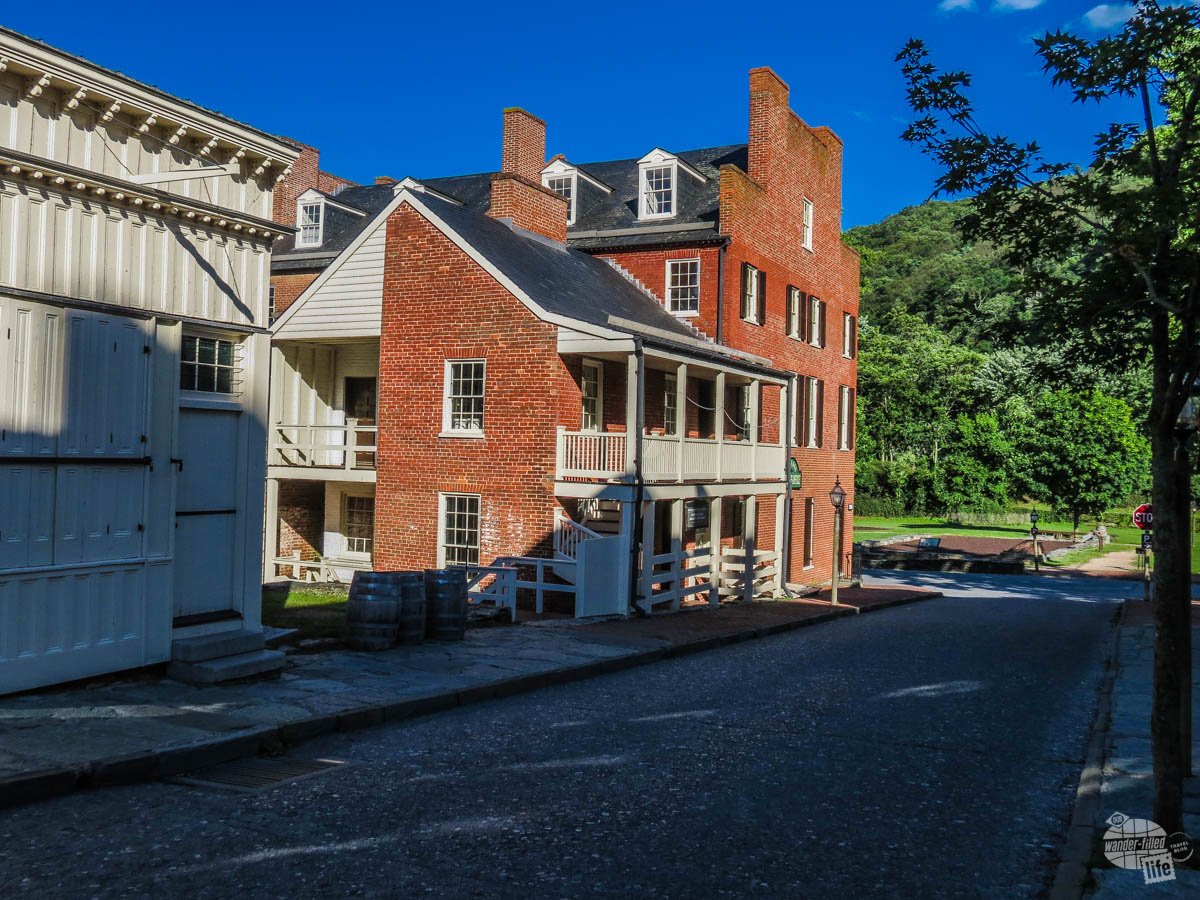
The site itself preserves mostly the old buildings and the remains of the water-powered industry at Harpers Ferry but has plenty of exhibits on the Civil War.
Antietam National Battlefield
September 17, 1862
Antietam was the site of the first invasion by the Confederate Army into Union-held territory. After a brutal back and forth over three days, the Union held the ground and the Confederates retreated back across the Potomac River.
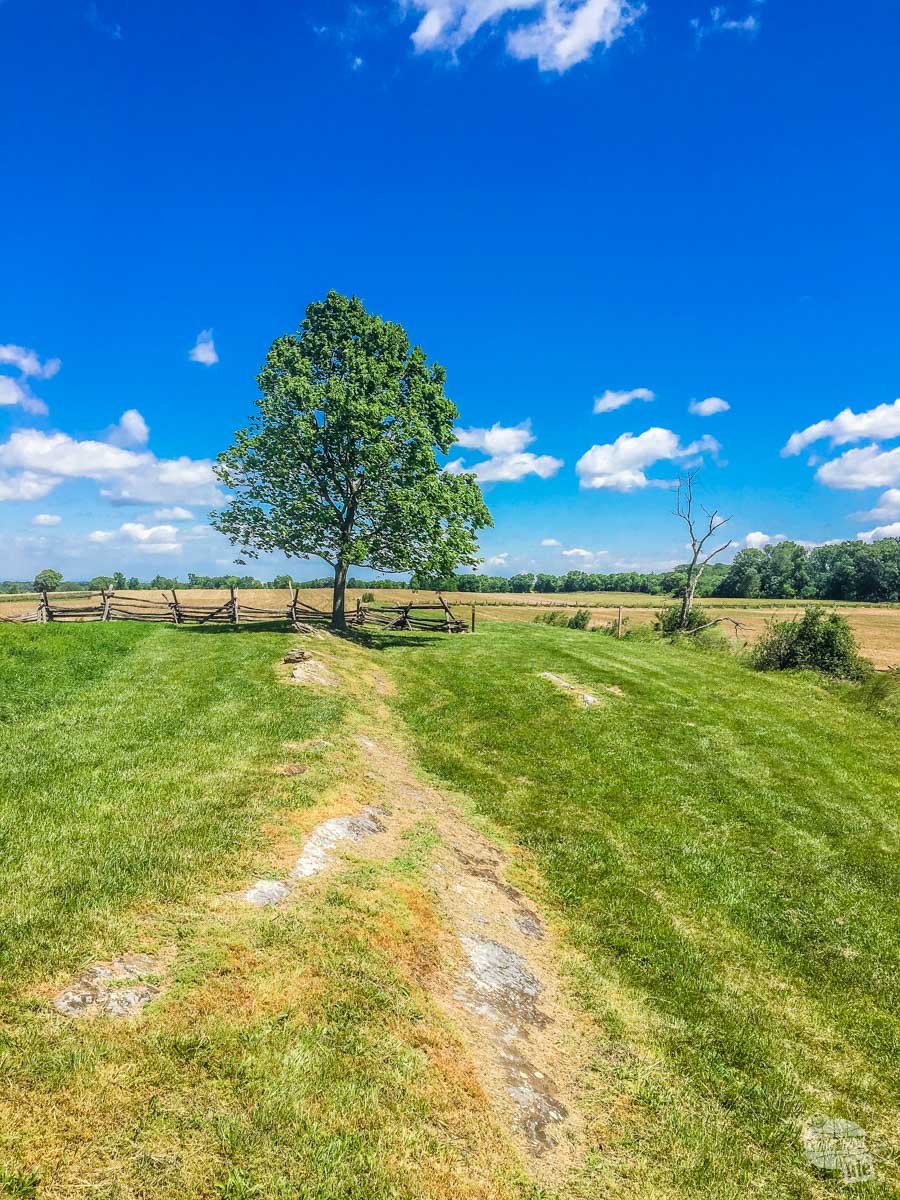
The visitor center at Antietam National Battlefield has an epic observation deck where we heard one of the best ranger talks we have ever attended. The auto tour is excellent and comprehensive. We also got out to hike to see the Cornfield, one of the sites of the most brutal fighting.
Read more about Harpers Ferry, Antietam and Monocacy here.
Gettysburg National Military Park
July 1-3, 1863
Gettysburg is the battle that decided the war. Lee led his army north for a second time attempting to force an end to the war. In a battle that raged over three days, there were so many moments the battle could have gone the other way. Eventually, the Union prevailed and won the battle.
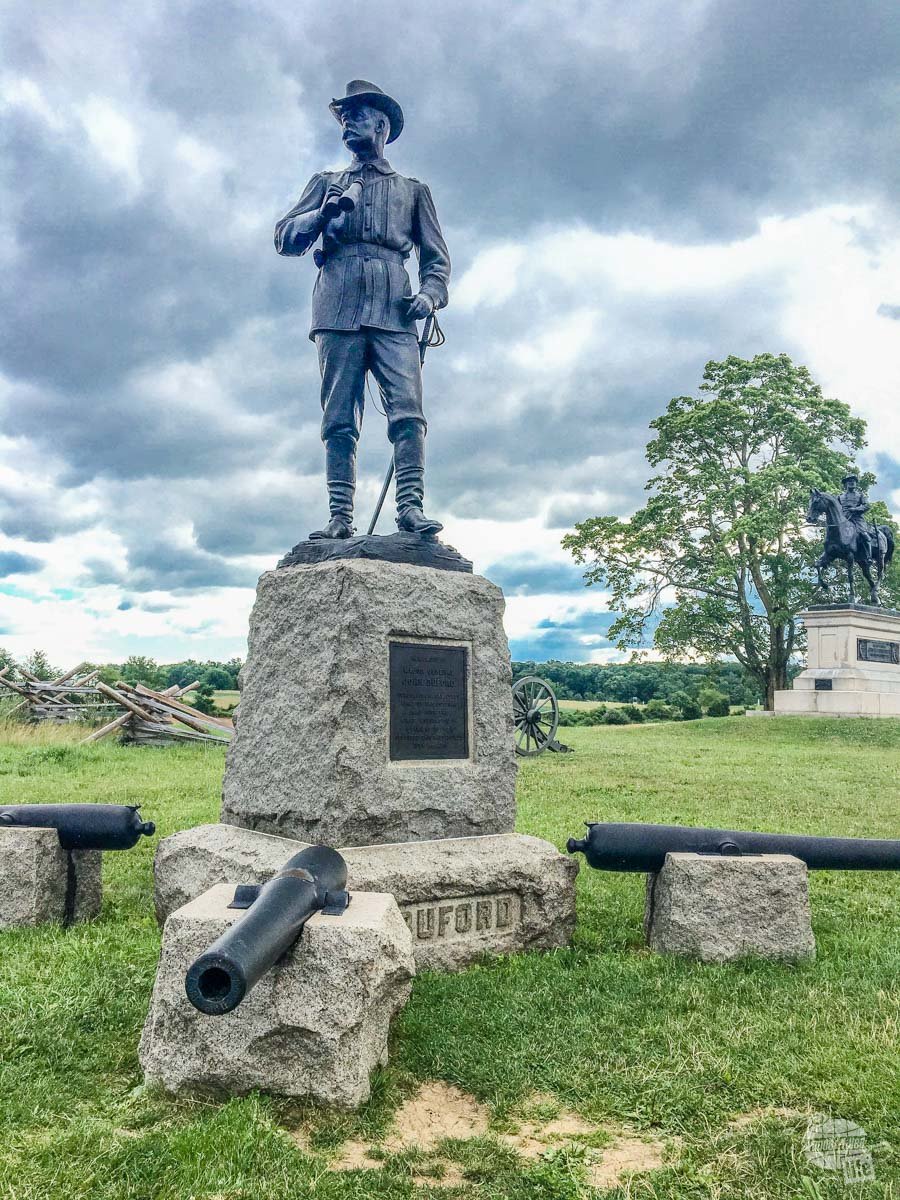
The Gettysburg National Military Park visitor center is extensive and the auto tours can take quite a bit of time. I highly recommend spending at least two days exploring Gettysburg and visiting the adjacent Eisenhower National Historic Site.
I also highly recommend watching the excellent movie Gettysburg before visiting. It will help the various landmarks on the battlefield come alive.
Read more about Gettysburg here.
Monocacy National Battlefield
July 9, 1864
The third and final invasion of the Union, this battle was really more a diversion late in the war to take the pressure off of Petersburg. While it was a Confederate victory, it was short-lived.
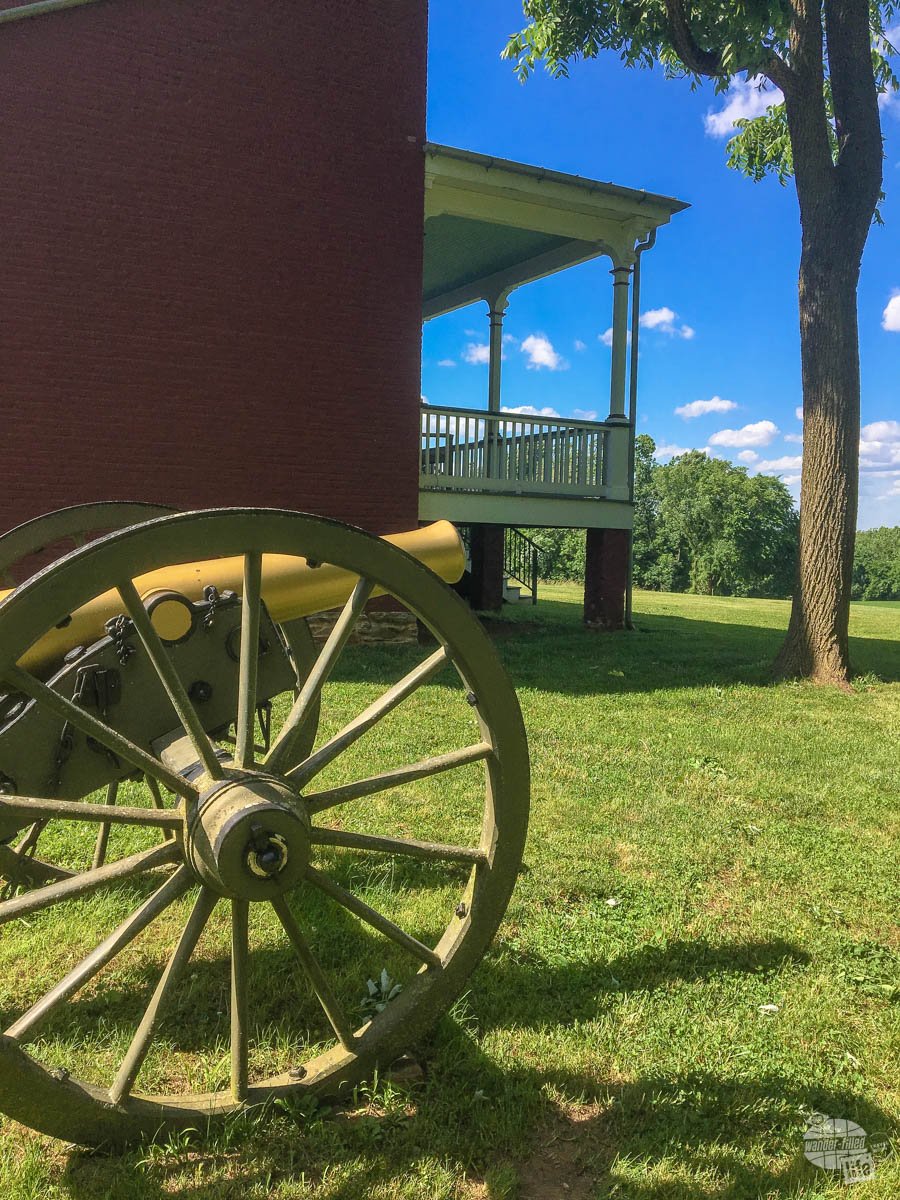
While you can see most of the highlights in a car, I suggest getting out and walking the battlefield. We had a good hike here and particularly enjoyed the area around the battlefield.
Fredericksburg and Spotsylvania National Military Park
December 11-15, 1862 | May 1-3, 1863 | May 5-7, 1864 | May 8-21, 1864
Your next stop on your Eastern Theater Civil War Road Trip is Fredericksburg and Spotsylvania National Military Park. This site encompasses four important battles of the Civil War: Fredericksburg, Chancellorsville, the Wilderness and Spotsylvania Court House.
Fredericksburg was a failed attempt by Union forces to cross the Rappahannock River and attack Richmond. Historians typically regard Chancellorsville as Robert E. Lee’s “perfect battle” because of his audacious tactics but the Confederates suffered significant losses.
The same director who created the movie Gettysburg also created Gods and Generals which covers the early part of the Civil War, including the battles of Manassas and Fredericksburg.
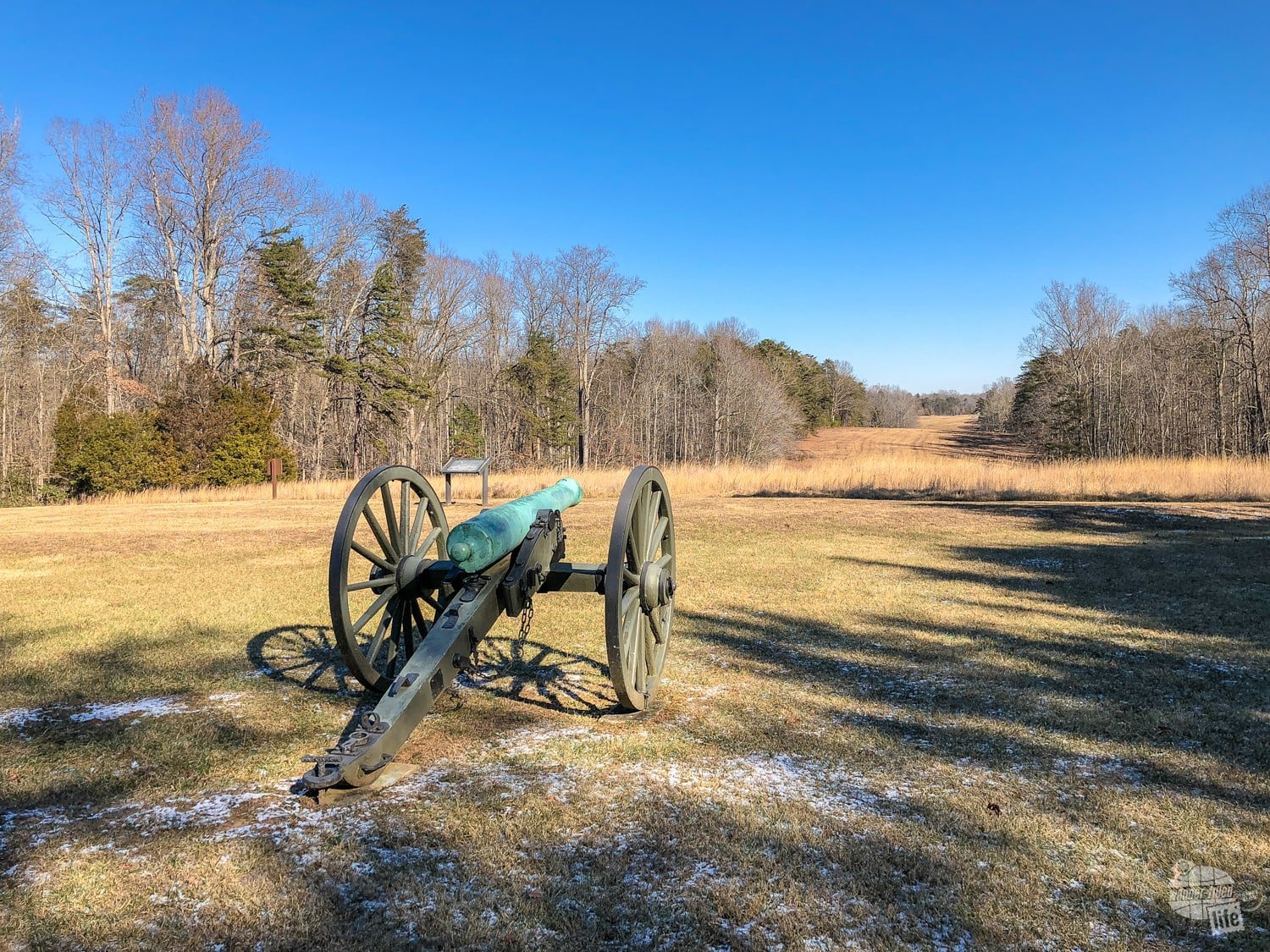
The latter two battles, Wilderness and Spotsylvania Court House, were part of Grant’s Overland Campaign which was designed to pursue Lee back to Richmond and force an end of the war.
We were able to visit and tour all of these battlefields in one day but it was a LONG day. If you have the time, I would break this park up over two days to give you more time to explore and fully digest each of the battles.
Start at the Fredericksburg visitor center. There are auto tours on the park map for each of the four battlefields.
Richmond National Battlefield
March 17 – May 31, 1862 | June 25 – July 1, 1862 | May 4 – June 12, 1864 | June 14, 1864 – April 2, 1865
Richmond National Battlefield preserves 13 sites around the city of Richmond. As the Confederate capital, Richmond was the principal target of the Union war effort.
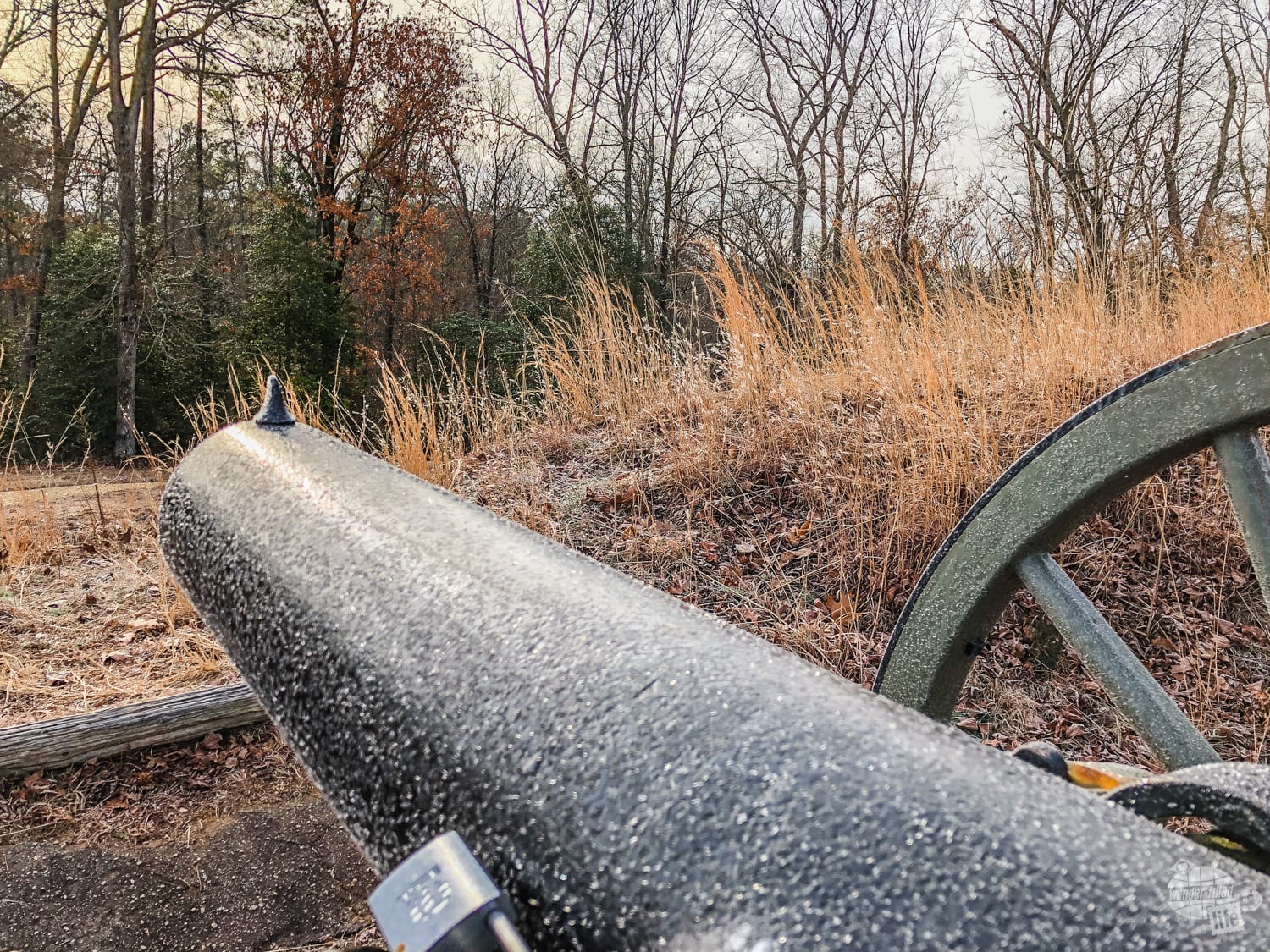
These sites vary from the chief ironworks and hospitals to various defensive fortifications and small battlefields for the skirmishes fought on the outskirts of the city.
We only visited a few of the sites as visiting all of them would take at least a day or two.
Petersburg National Battlefield
June 15, 1864 – April 2, 1865
The siege of Petersburg and the siege of Richmond were really part of the same battle. Between the sites at Richmond and Petersburg, they paint the grim picture of the final days of the Confederacy.
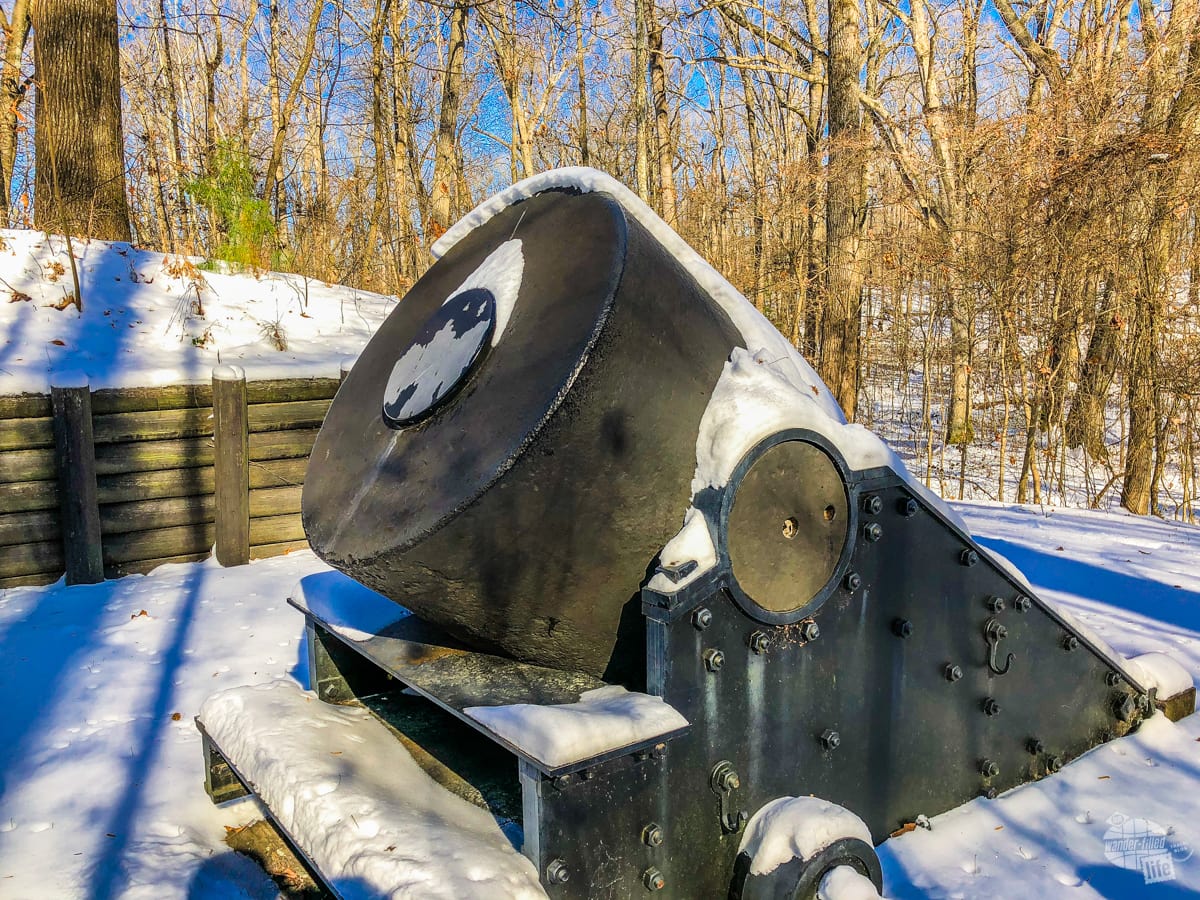
Petersburg National Battlefield is easily toured by car but be sure to get out on foot to see the Dictator, a massive siege mortar used by the Union at Petersburg.
Appomattox Court House National Historical Park
April 9, 1865
Following his abandonment of Richmond and Petersburg, Lee rushed to get to the pass at Lynchburg to connect with other Confederate forces. Union forces pursued him across Virginia and cut him off from the pass through the Appalachian Mountains, forcing Lee’s surrender.
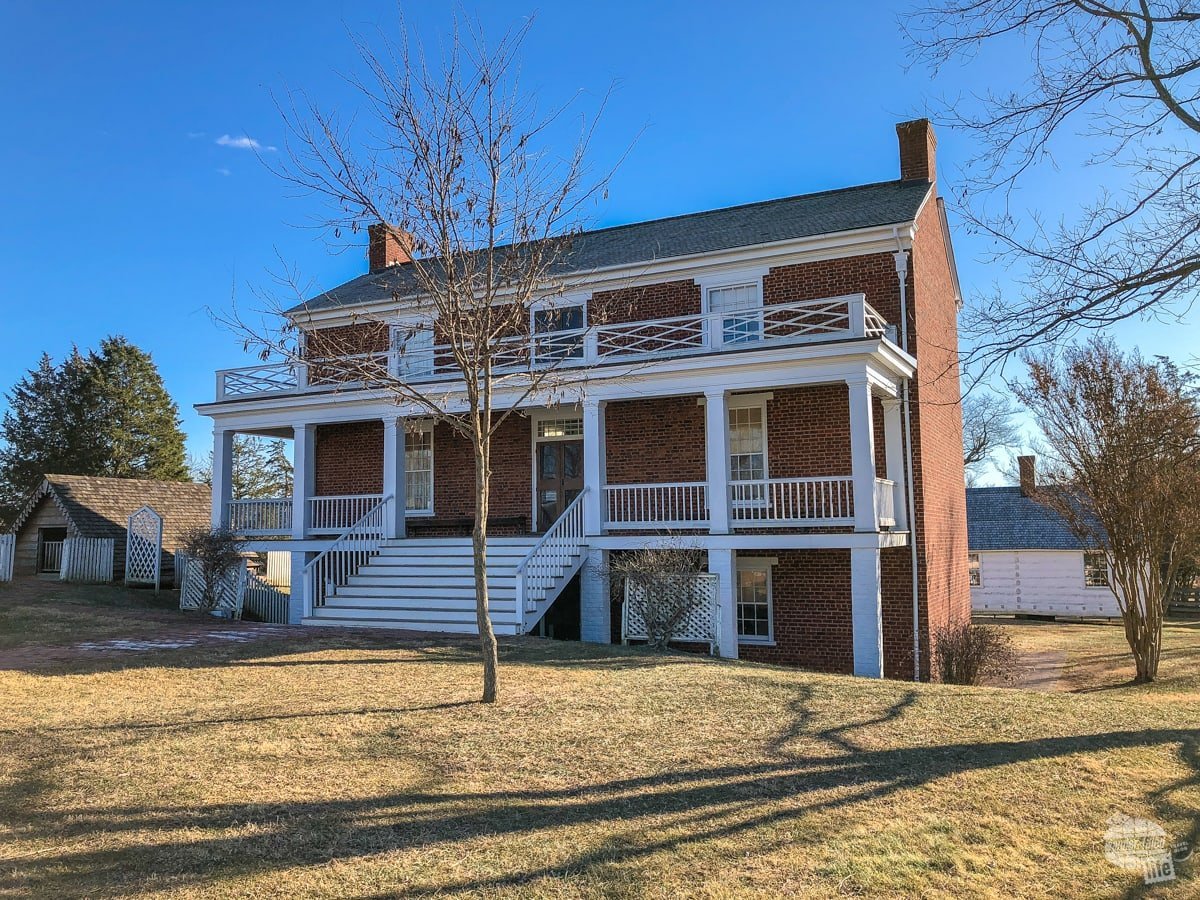
Appomattox Court House National Historical Park preserves the village of Appomattox Court House where Lee surrendered to Grant, including having rebuilt the home where the surrender took place. Ironically, the owner of the home, Wilmer McLean, had owned a home in Manassas that was involved in the battle there. He moved to Appomattox Court House, which is kinda in the middle of nowhere, to escape the war.
There is an auto tour of the battlefield as well as the preserved village to explore. I highly recommend walking out to see the Chamberlain/Gordon Salute site.
Read more about Virginia’s battlefields here.
Final Thoughts on these Civil War Road Trips
The American Civil War is a tough subject. On the one hand, it was fought over a particularly horrific issue: slavery. On the other hand, there were a lot of good people who fought and died on both sides of the war.
The war ravaged the country and had a significant impact on the people of the United States for decades to come. It was a major contributing factor to the migration westward in the following years.
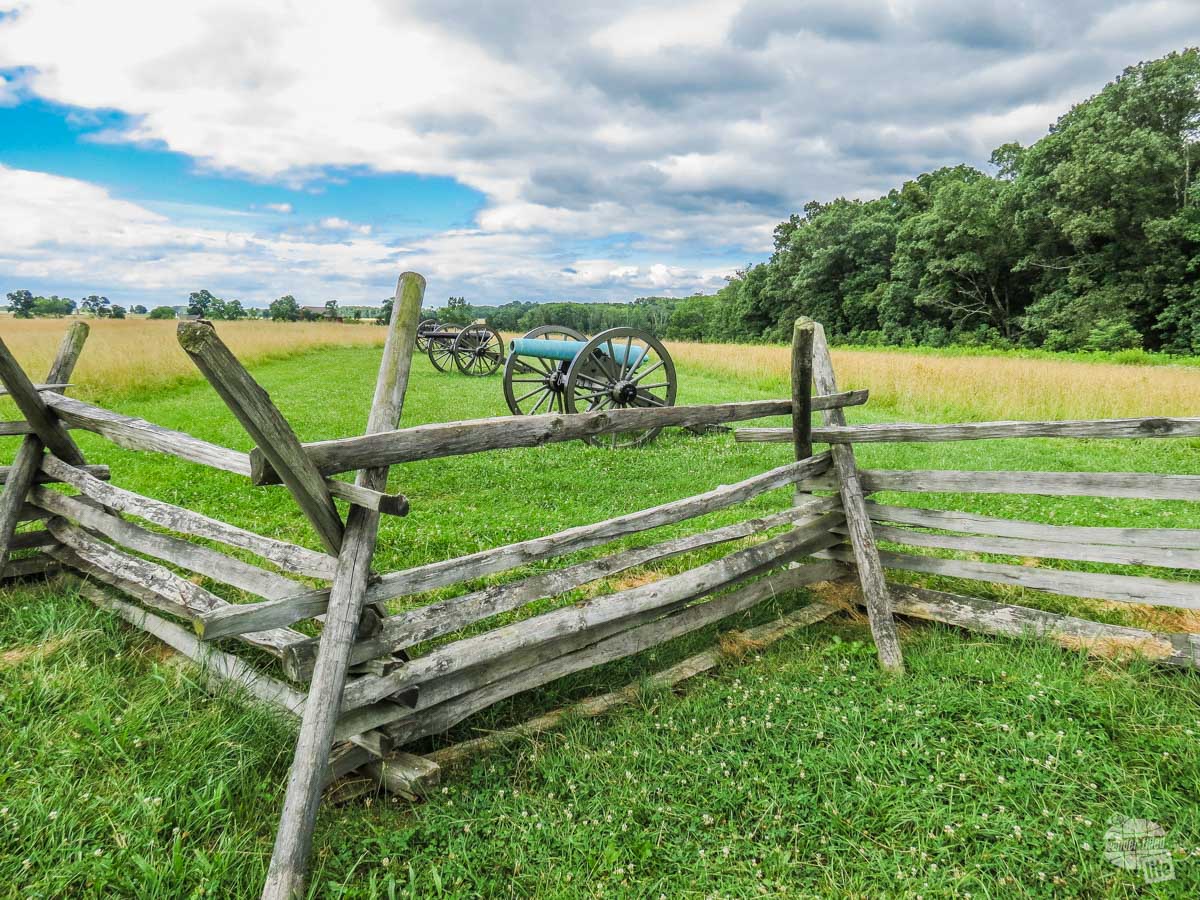
As tough as it is to stomach, we honor the men and women who sacrificed so much on both sides by learning about the war in which they fought.
I hope these road trips will help you understand the war in a new light and give you a perspective on the men who fought and died for what they believed in.
Travel Resources
What do you use to find a flight?
We use Skyscanner to find deals on flights. Skyscanner has a great interface and compares tons of airlines for the best pricing and routing. That said, it does not always have every airline and some airlines will have better deals on their website. Still, Skyscanner is a great place to start.
Click here to search for a flight.
What do you use to find a hotel?
We typically stay at Hilton properties, so we use the Hilton website. You can find good Hilton Honors discounts or AAA discounts for a hotel there. We make great use of our free night certificates from our Hilton Honors American Express.
Click here to book a Hilton property.
If there are no Hilton properties available, we use TripAdvisor to read reviews and book the hotel. We find we can get the best price that way.
Click here to search for a hotel.
We recently partnered with Stay22 to add interactive maps to each of our destination posts. This will allow you to see a plethora of hotels and vacation rentals all in one responsive map of the area.
What if I need more space than I can get at a hotel?
We use Vrbo for the times when we have rented a cabin for a weekend getaway, like this cabin in Townsend, TN, or needed to rent a house for a large family vacation. We had a great experience with them in terms of refunding deposits when COVID hit and will continue to use them.
Click here to search for a vacation rental.
Who do you use for rental cars?
As a general rule, we book with Hertz for rental cars. We have had nothing but good experiences with them. Plus, we really like unlimited mileage and not worrying about crossing state lines. We have even rented from Hertz overseas in both Slovenia and Croatia.
Click here to book a rental car.
How about booking a cruise?
We have found some amazing prices for booking a cruise through Cruise Direct. We have saved a lot of money on our cruises compared to what we found elsewhere, making a last-minute Bahamas cruise even cheaper.
Click here to book a cruise.
What if I want to rent an RV?
We highly recommend Outdoorsy for RV rentals. We rented a camper van for a week to visit Rocky Mountain National Park for the elk rut and Custer State Park for the Buffalo Round-Up and had a blast. The program was easy to use and we really enjoyed the freedom of having a camper van for that trip.
Click here to rent an RV.
What do you use for booking tours?
We don’t often book tours. Typically, we like to do stuff on our own. That said, there are some experiences you can’t have any other way. So, when we do want to book a tour, we always check Viator first.
Click here to book a tour.
Do you use anything to get discounts on the road?
We make extensive use of both Good Sam and AAA on the road. Good Sam is normally regarded as a discount card for RVers at campgrounds and Camping World but anyone can use the 5 cents off a gallon at the pump at both Pilot and Flying J.
Click here to get a Good Sam membership.
We have had AAA as long as we have been married and it has more than paid for itself in discounts at hotels, aside from the peace of mind of having roadside assistance. Add in paper maps and the ability to get an international driver’s license and it is more than worth it for any traveler out there.
Click here to get a AAA membership.
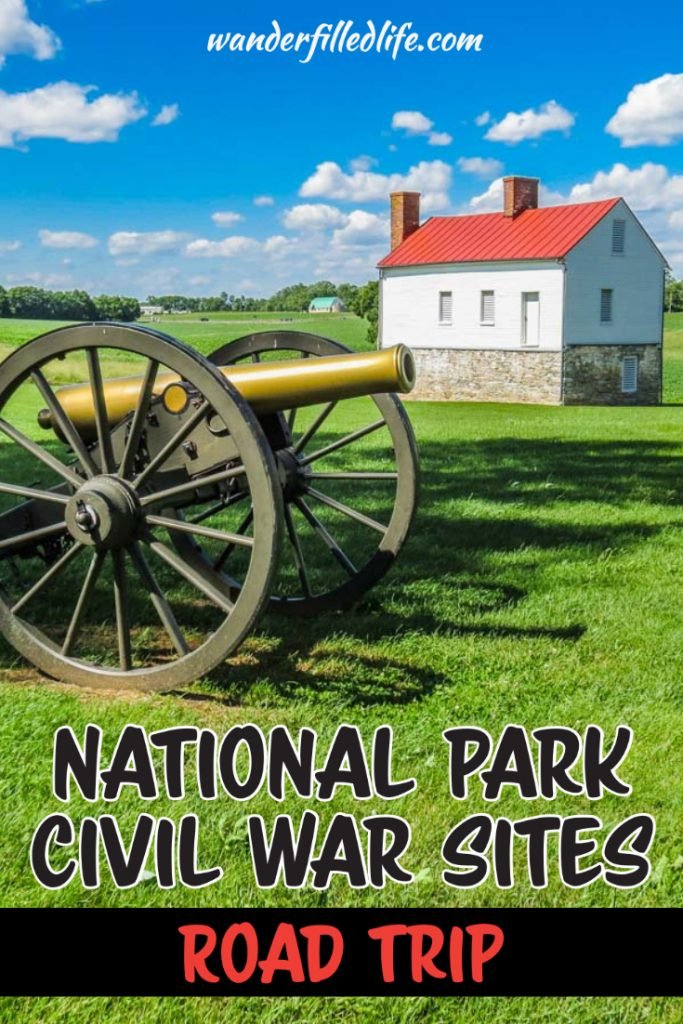
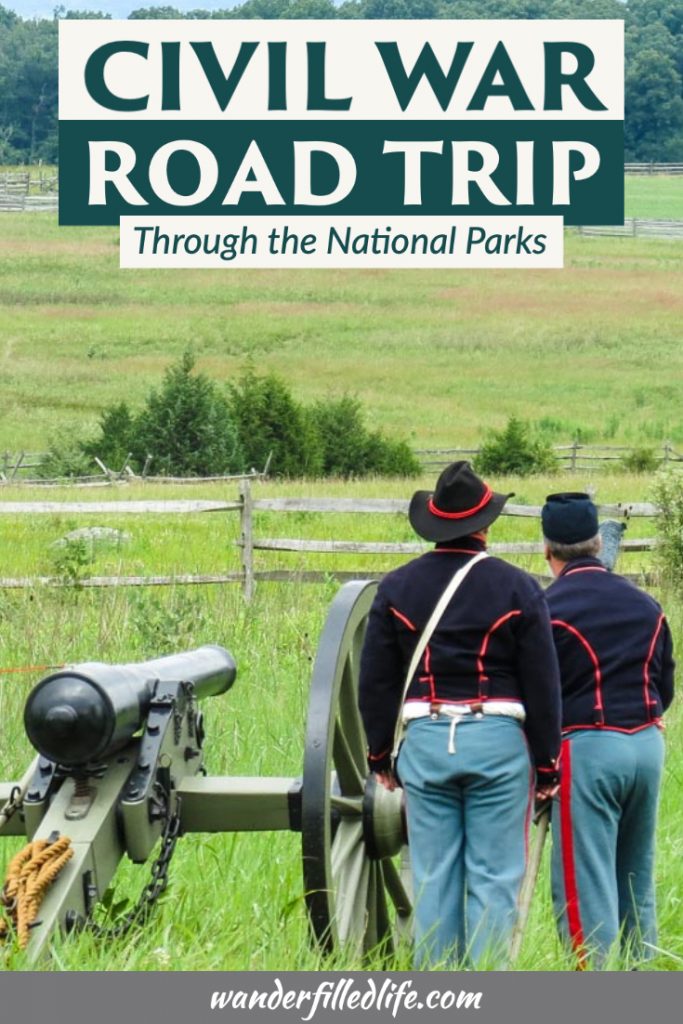
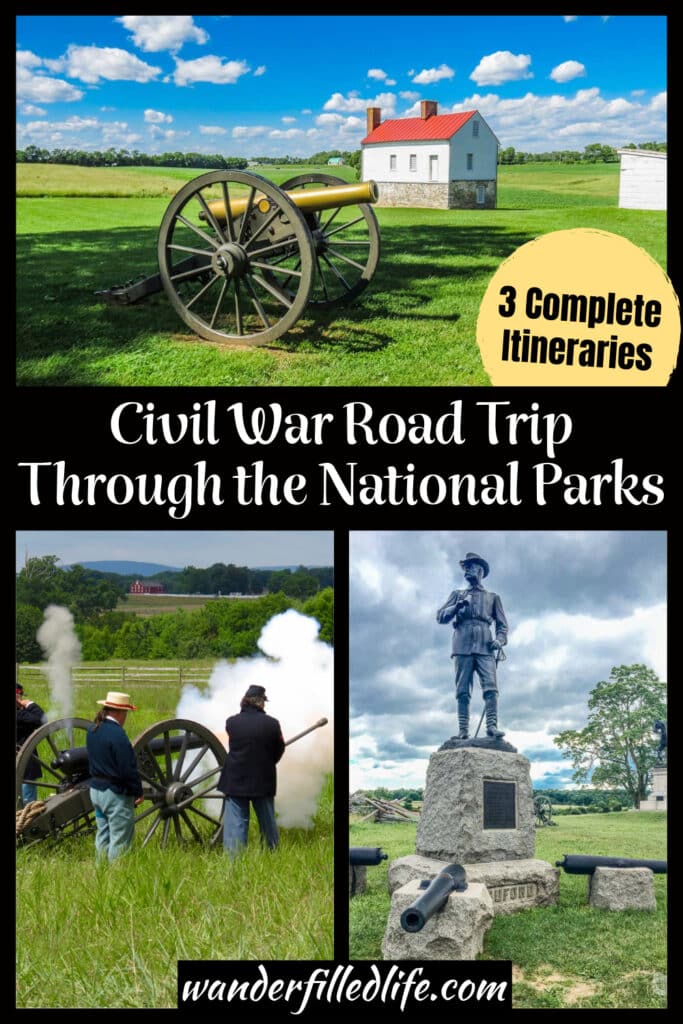


![Gettysburg - Extended Edition [Blu-ray] [1993] [Region Free]](https://m.media-amazon.com/images/I/51uLyxF96fL._SL160_.jpg)
![Gods and Generals: Extended Director's Cut [Blu-ray]](https://m.media-amazon.com/images/I/51pbkOy7OBL._SL160_.jpg)